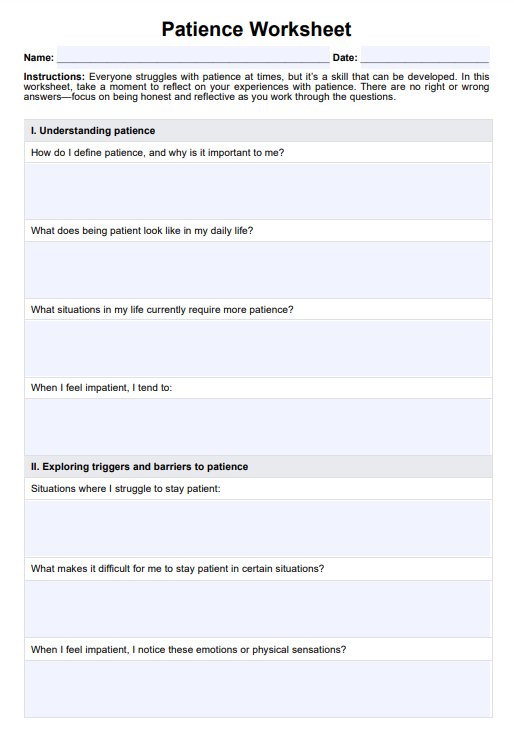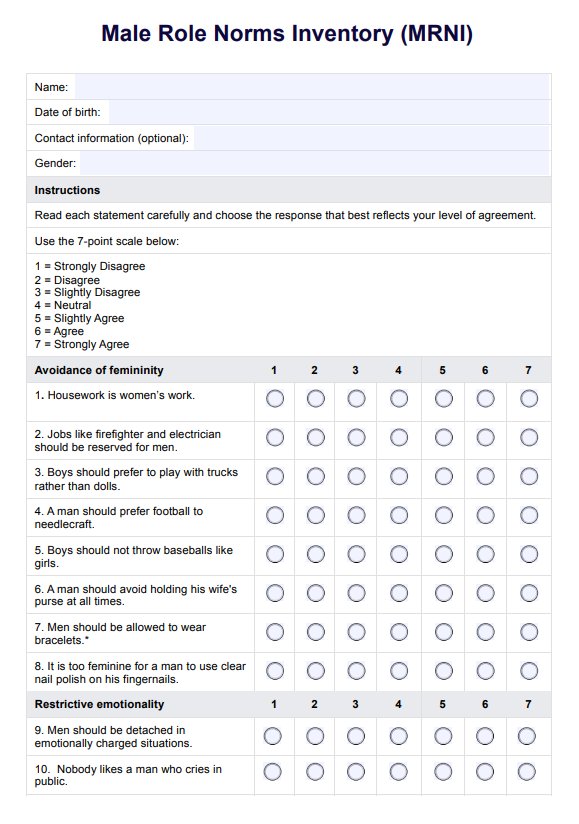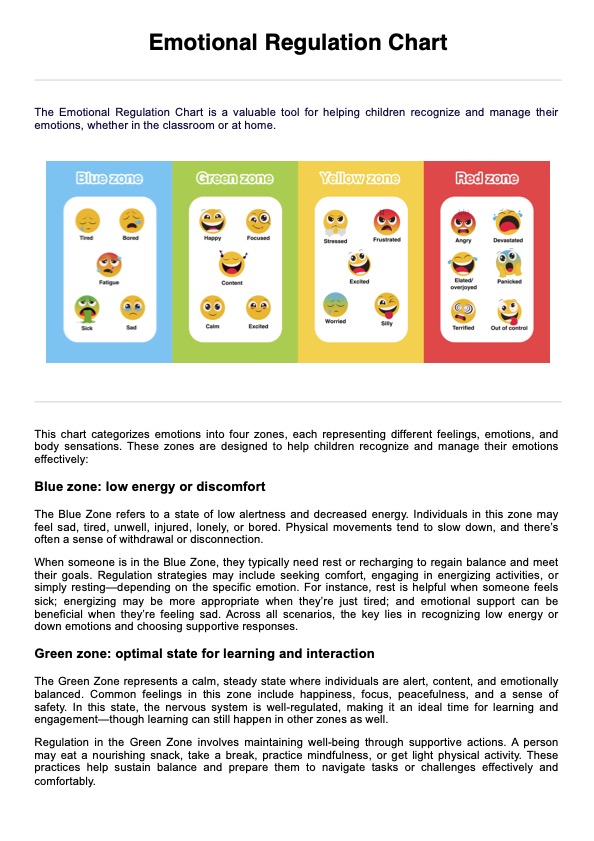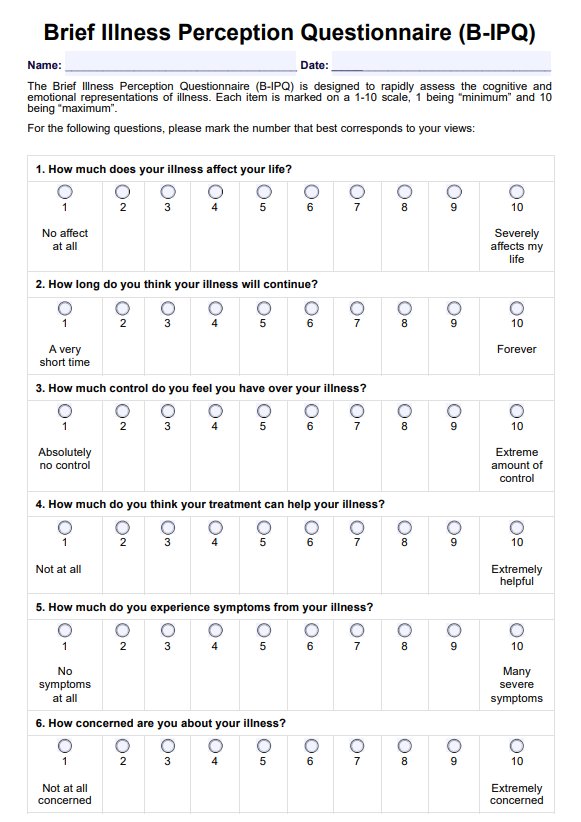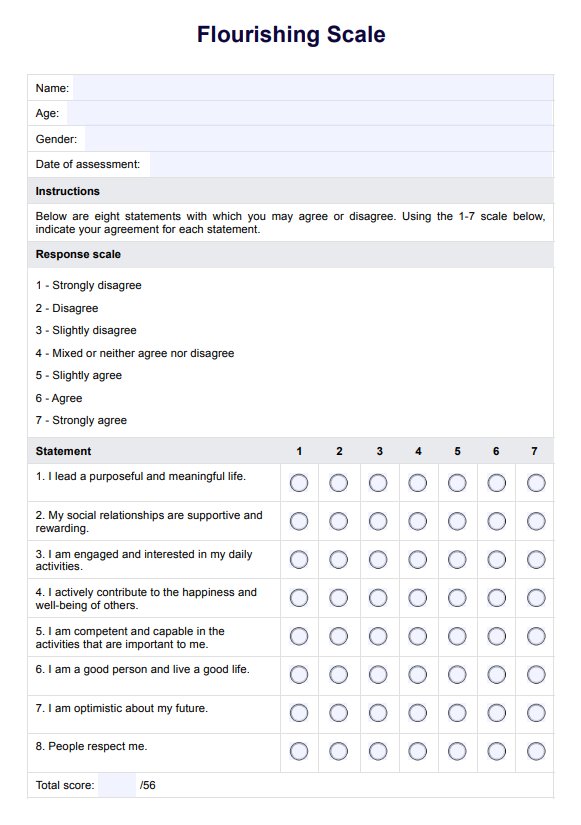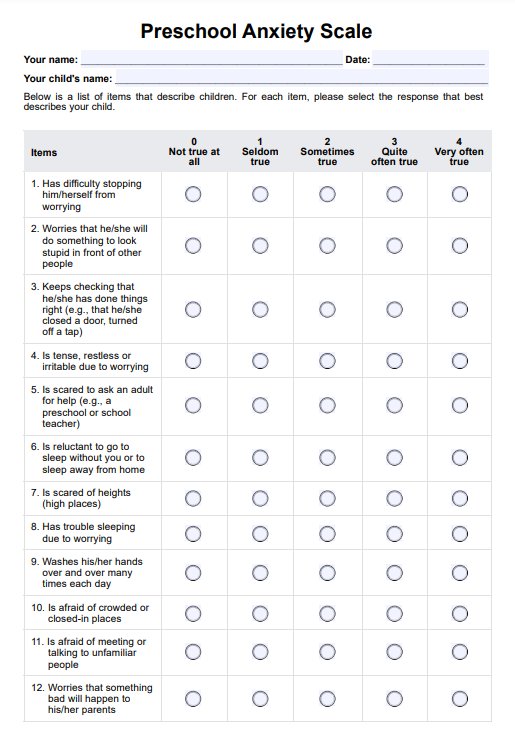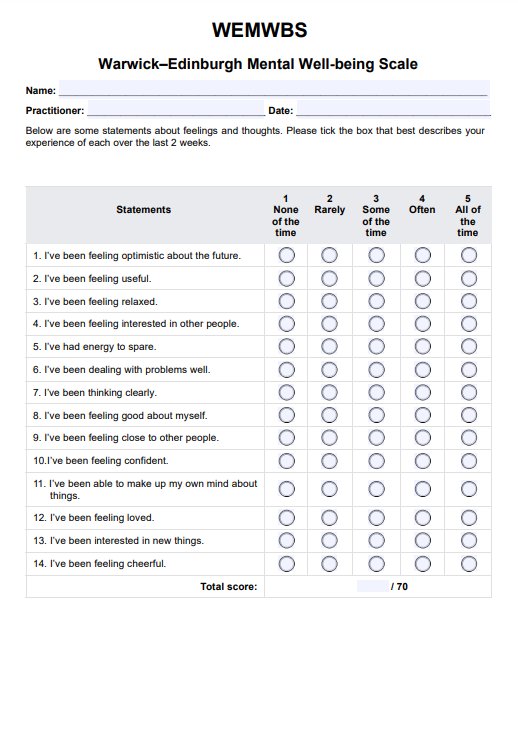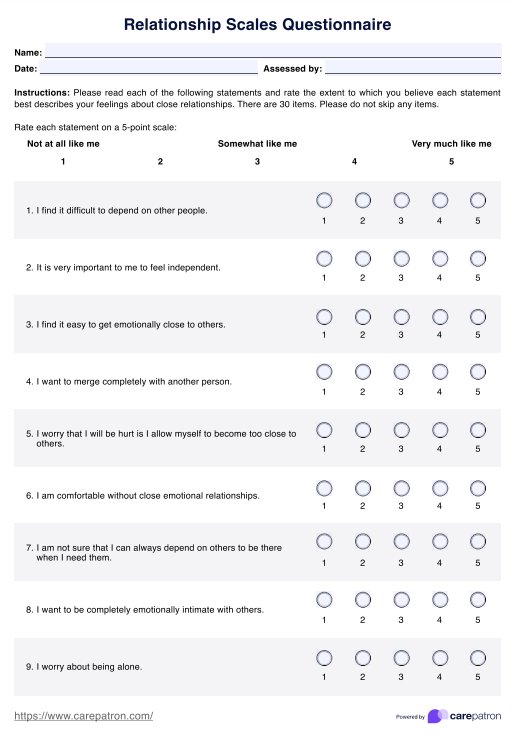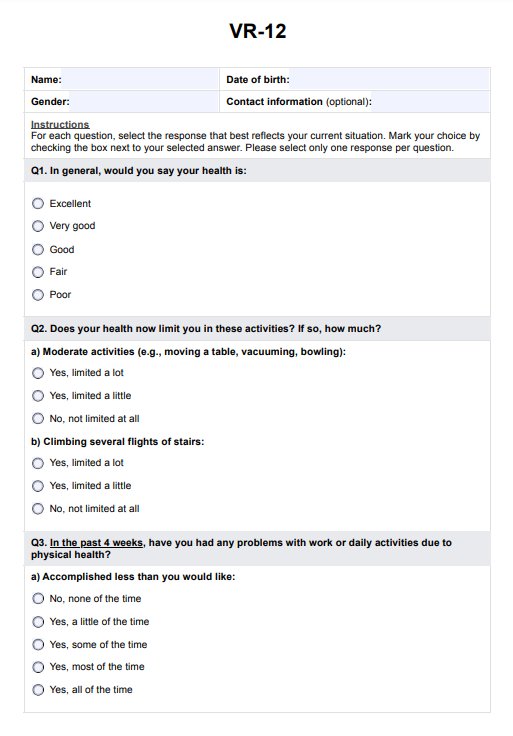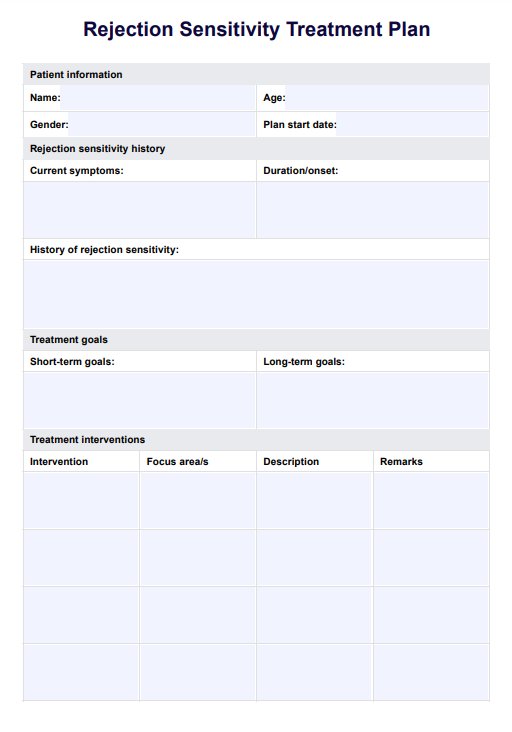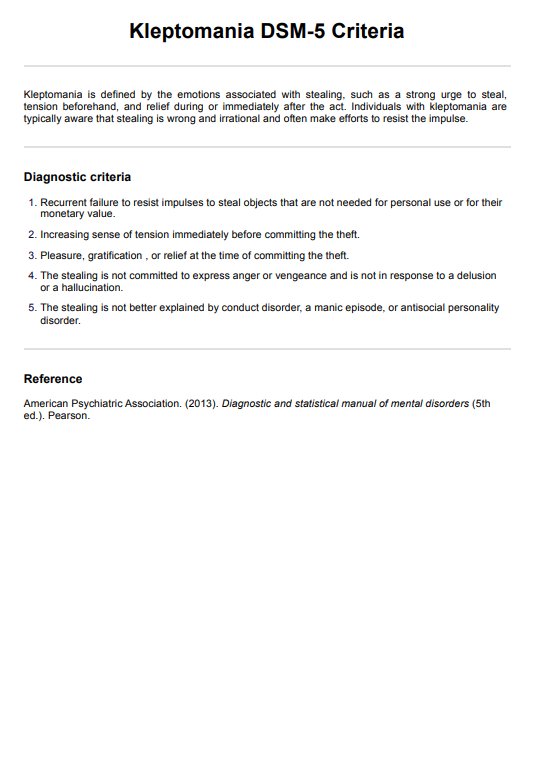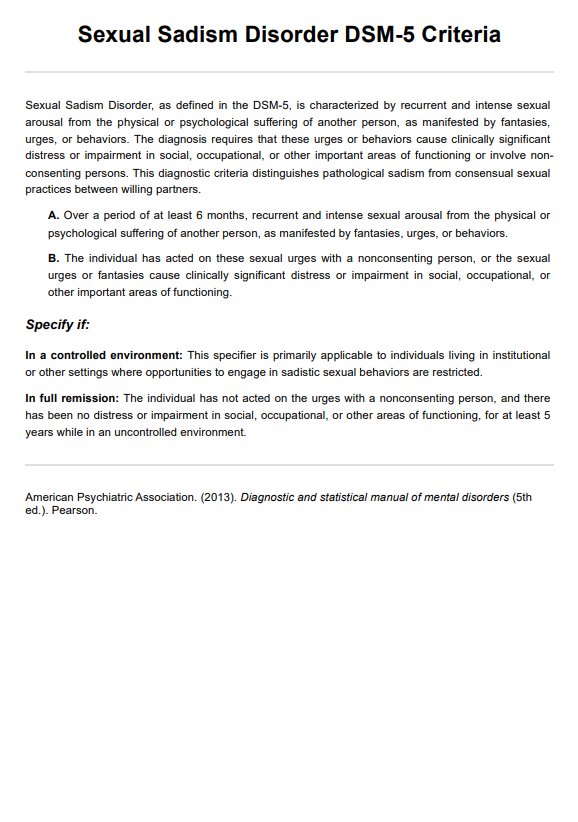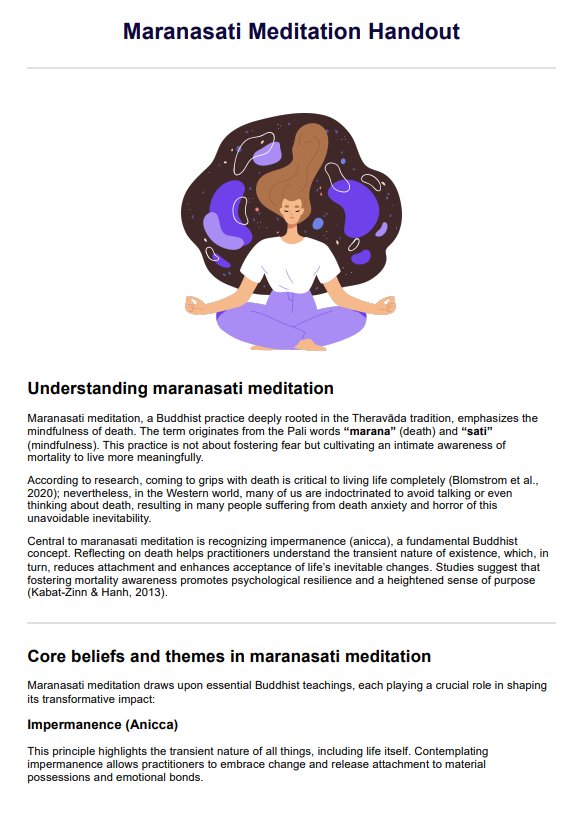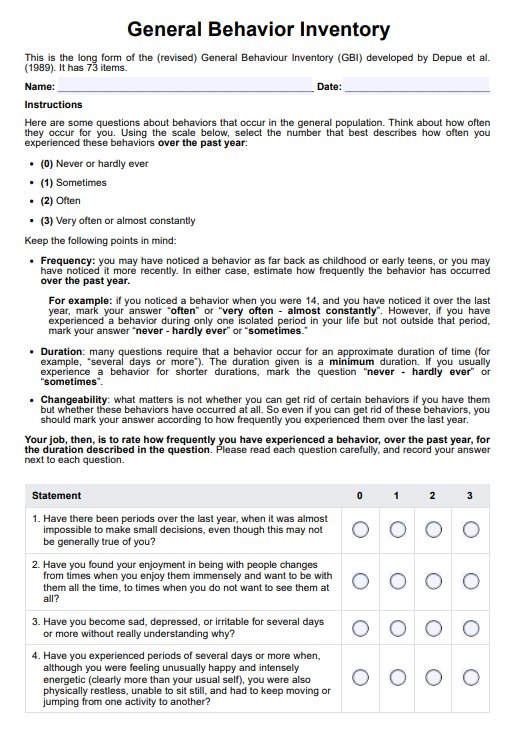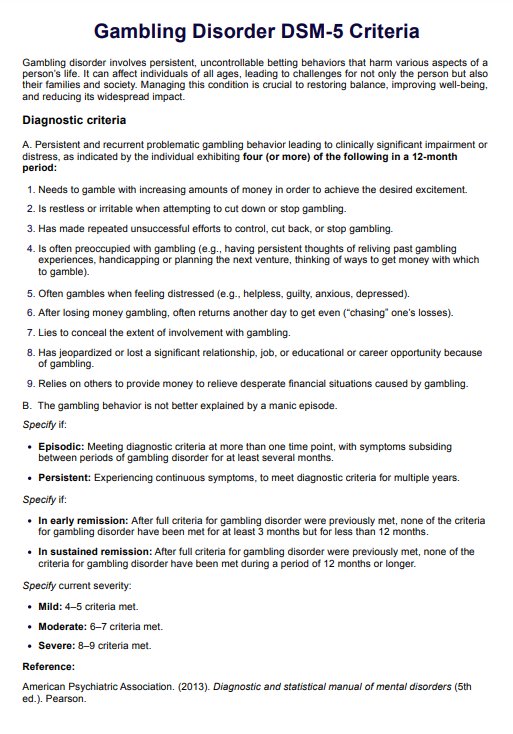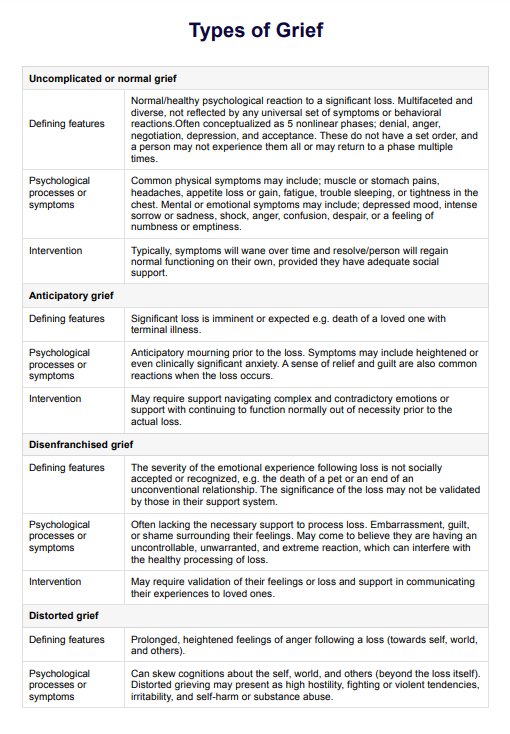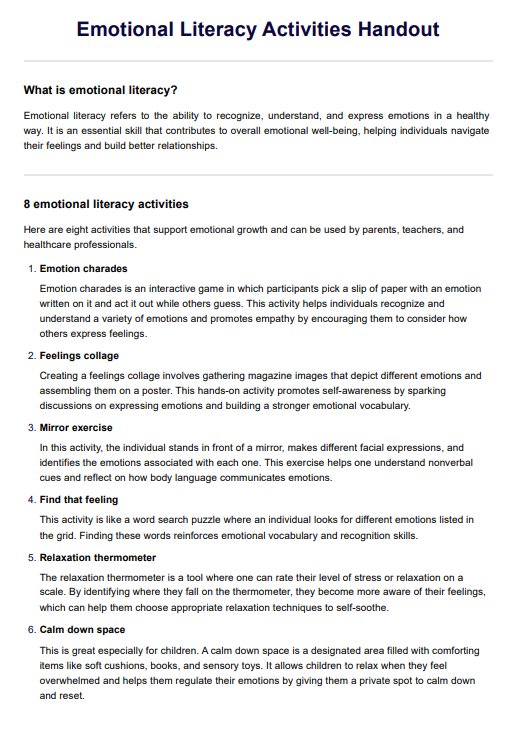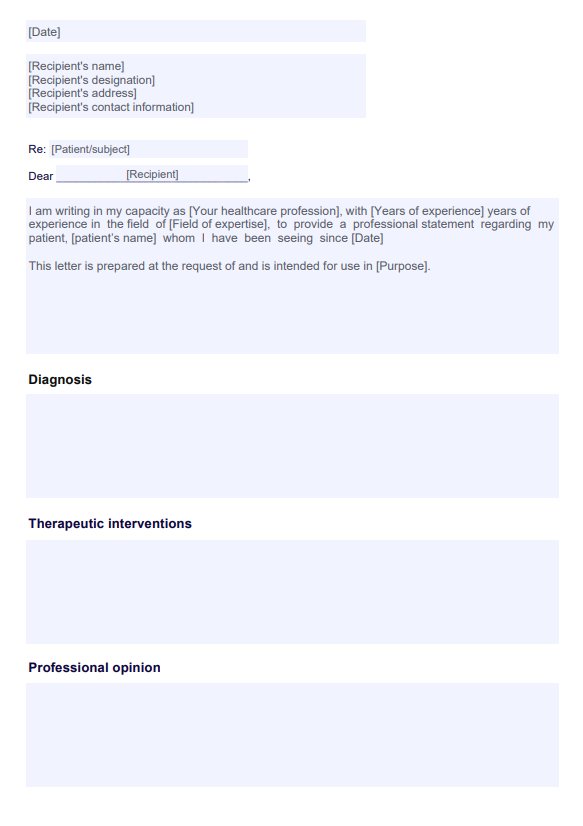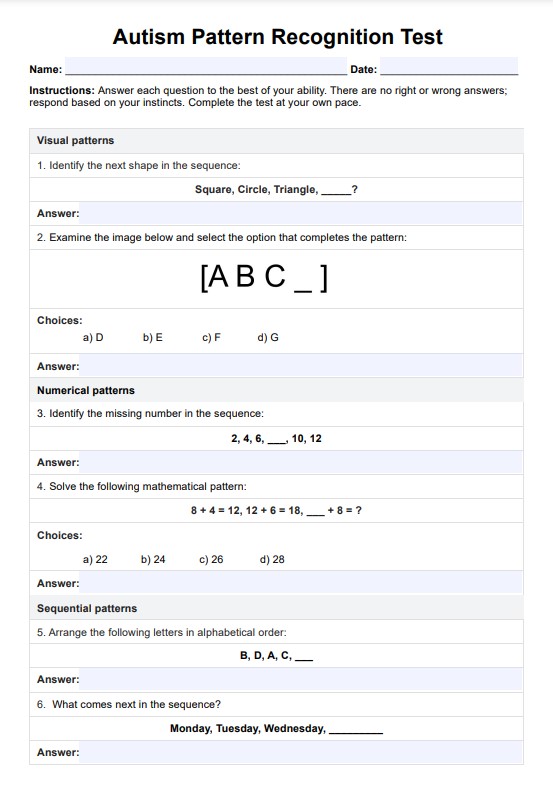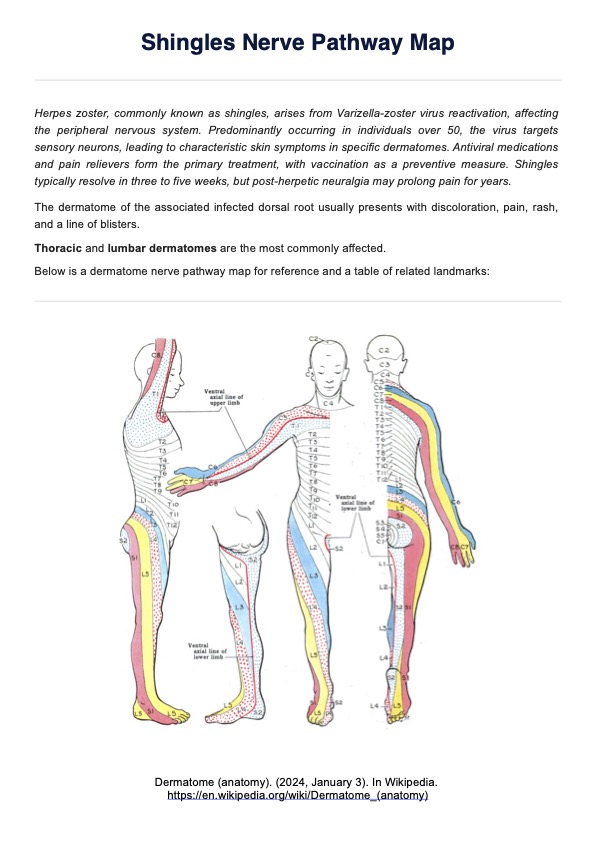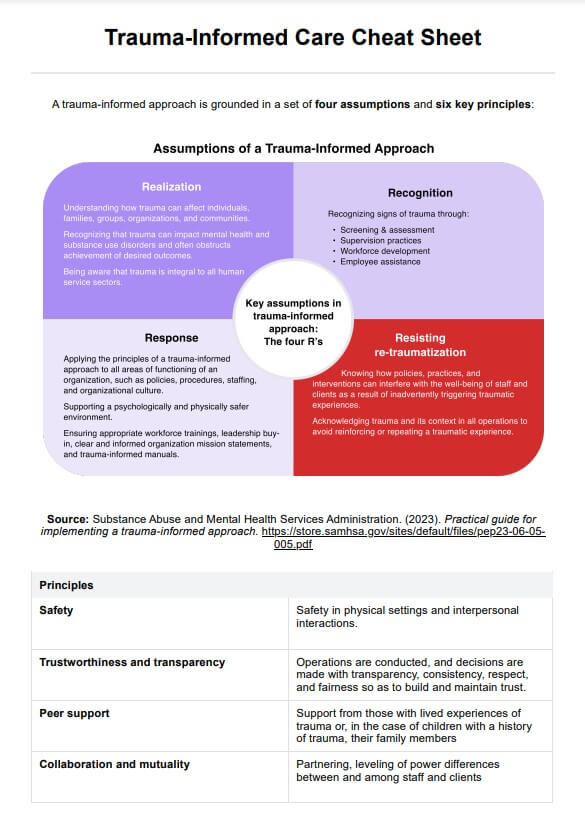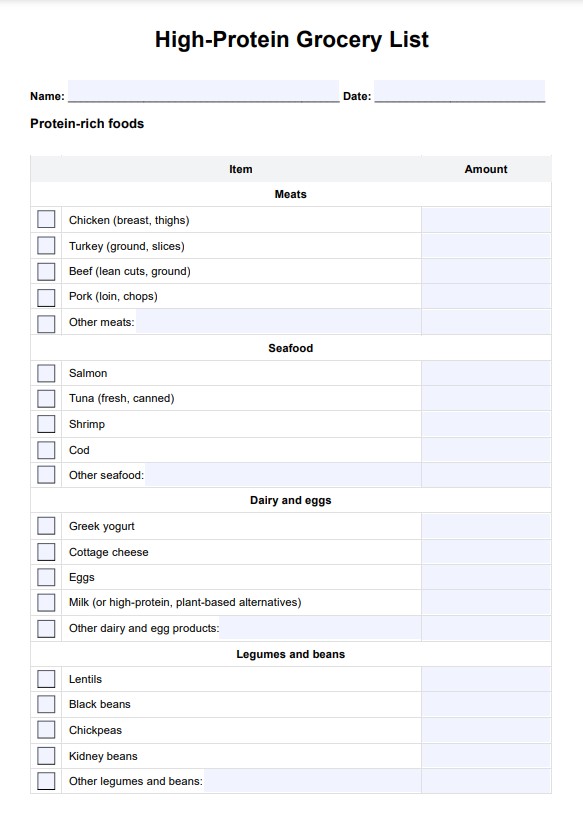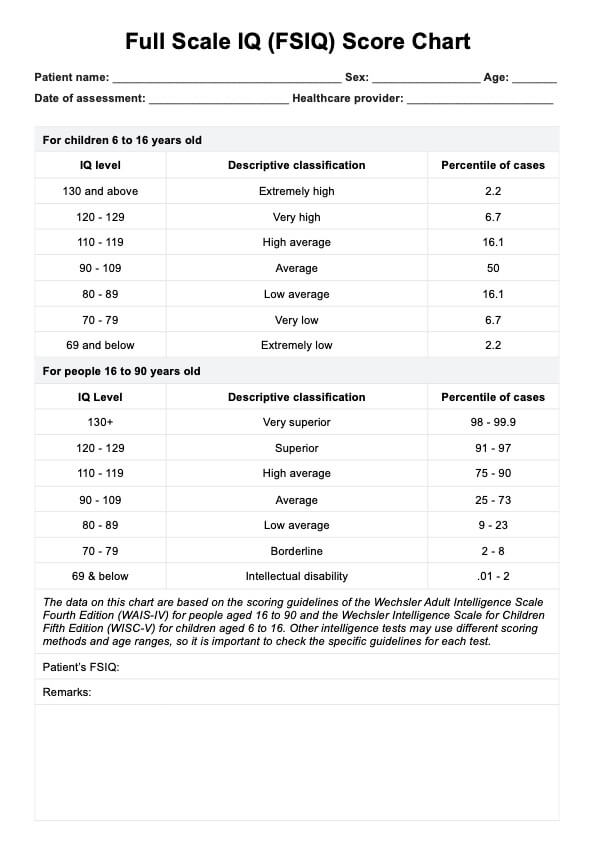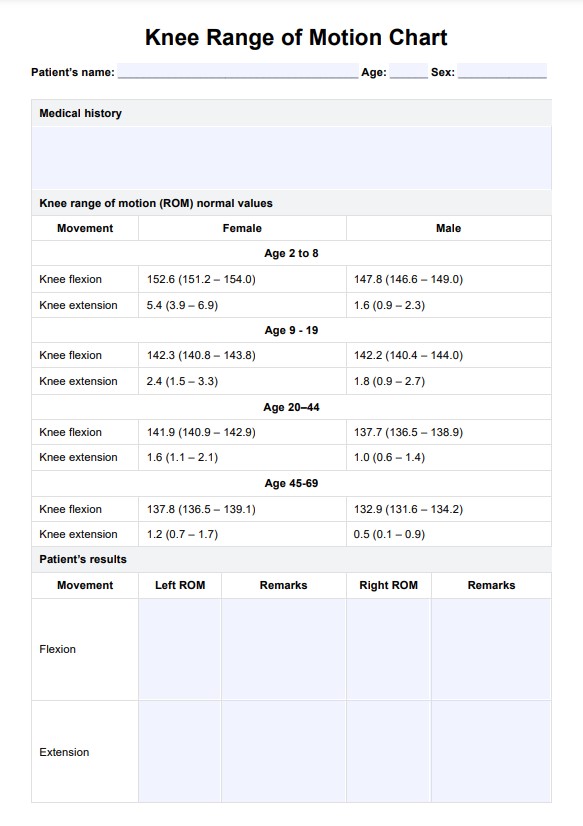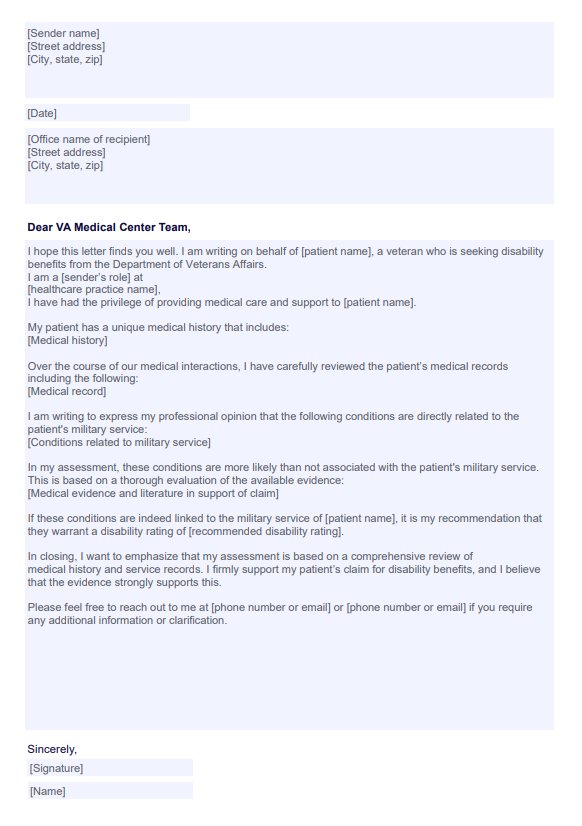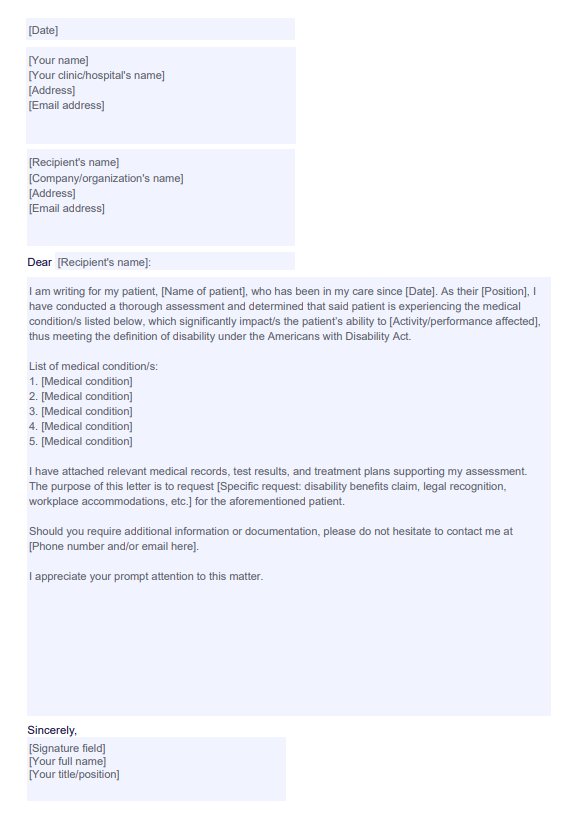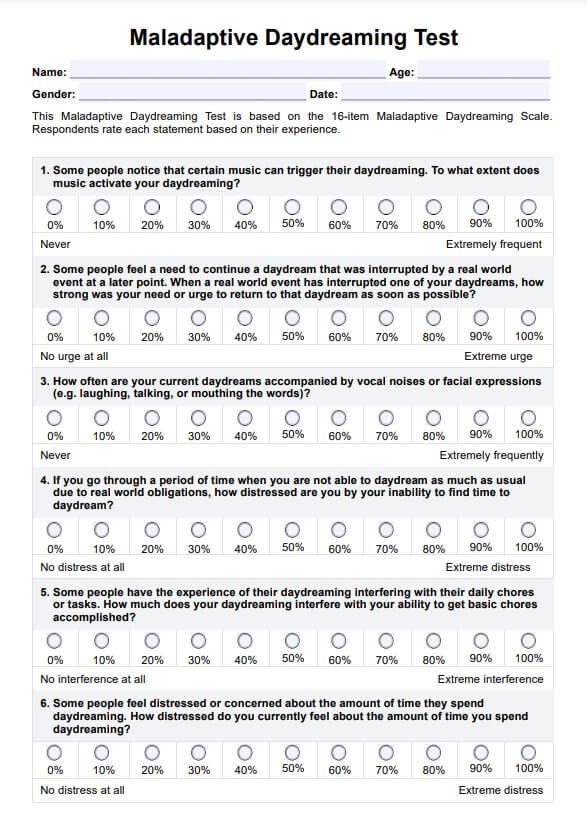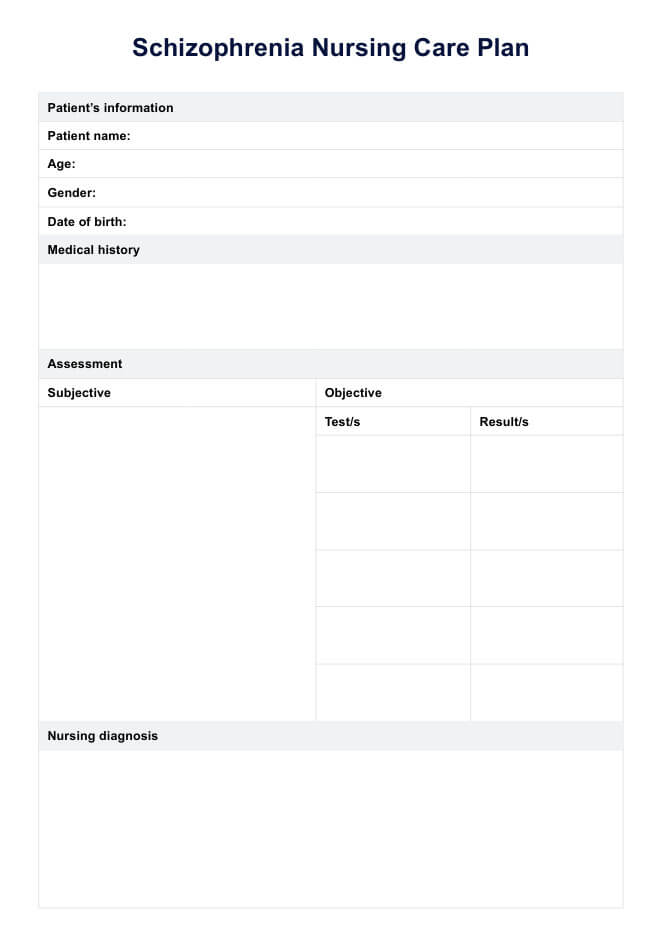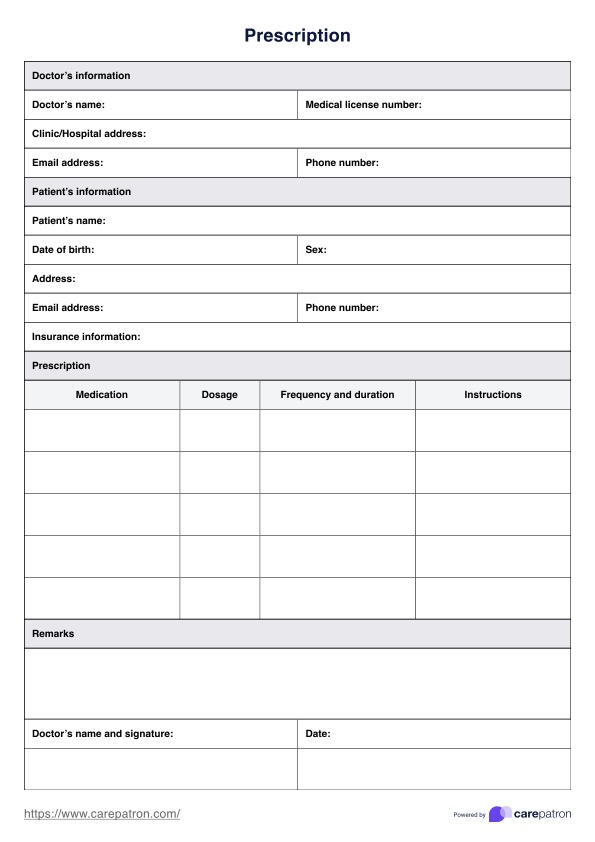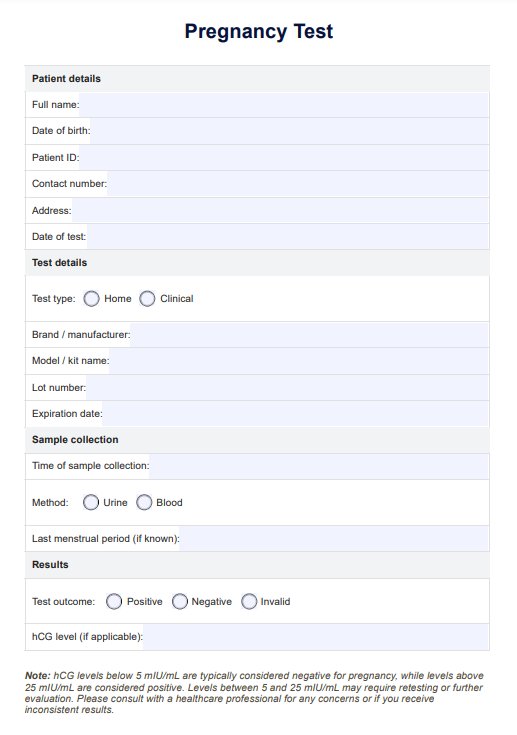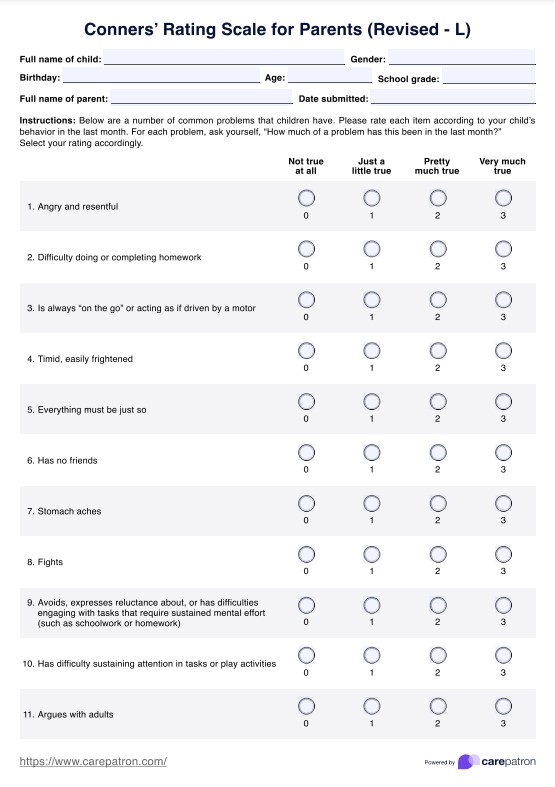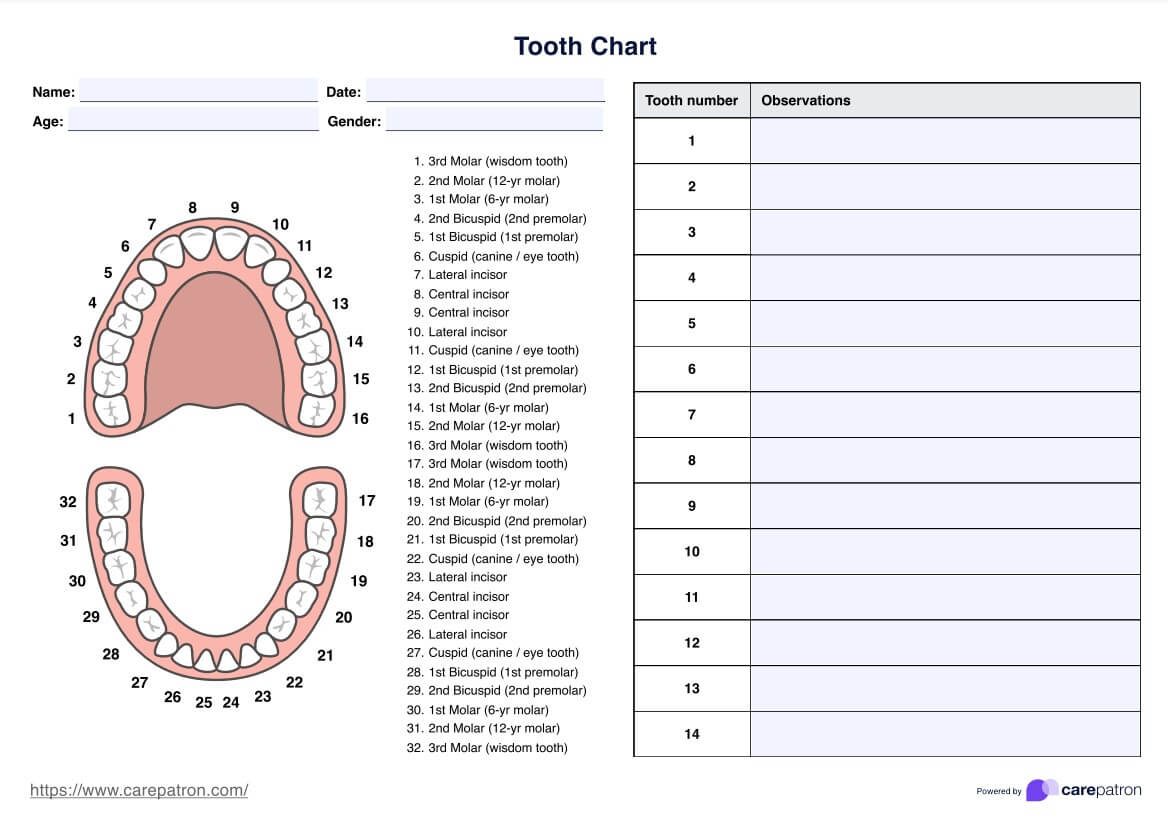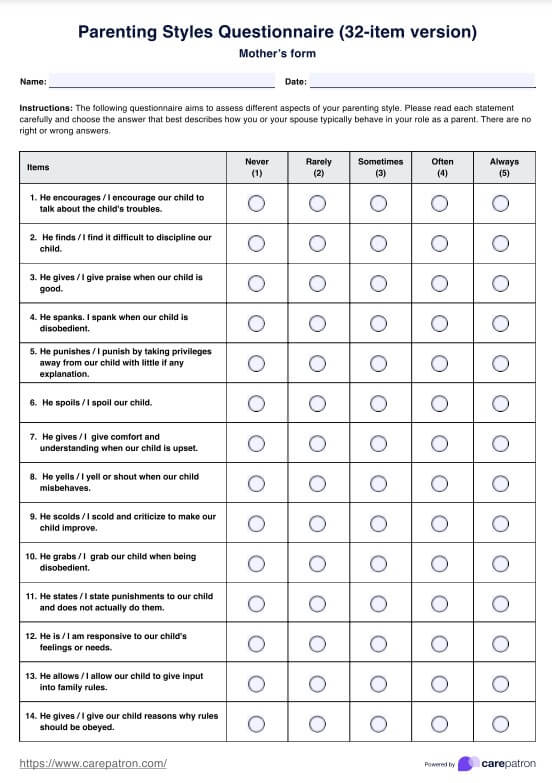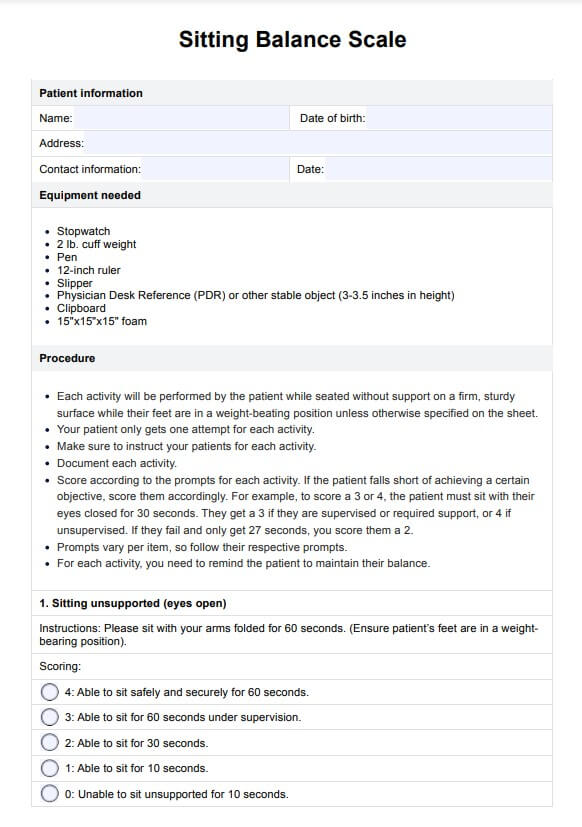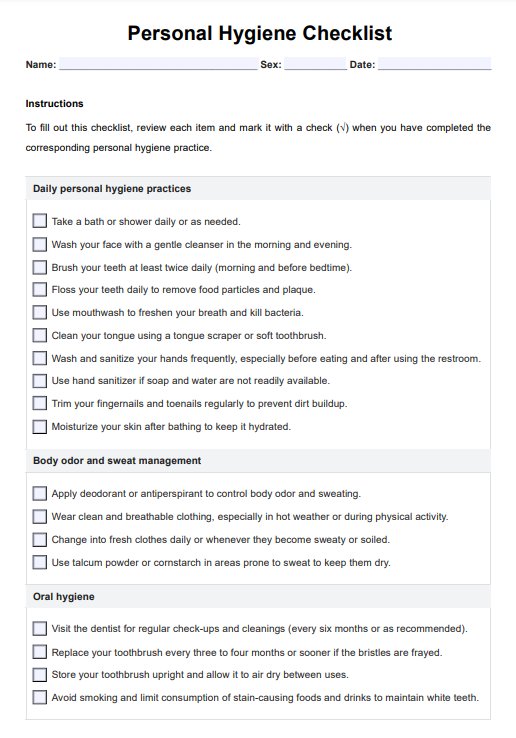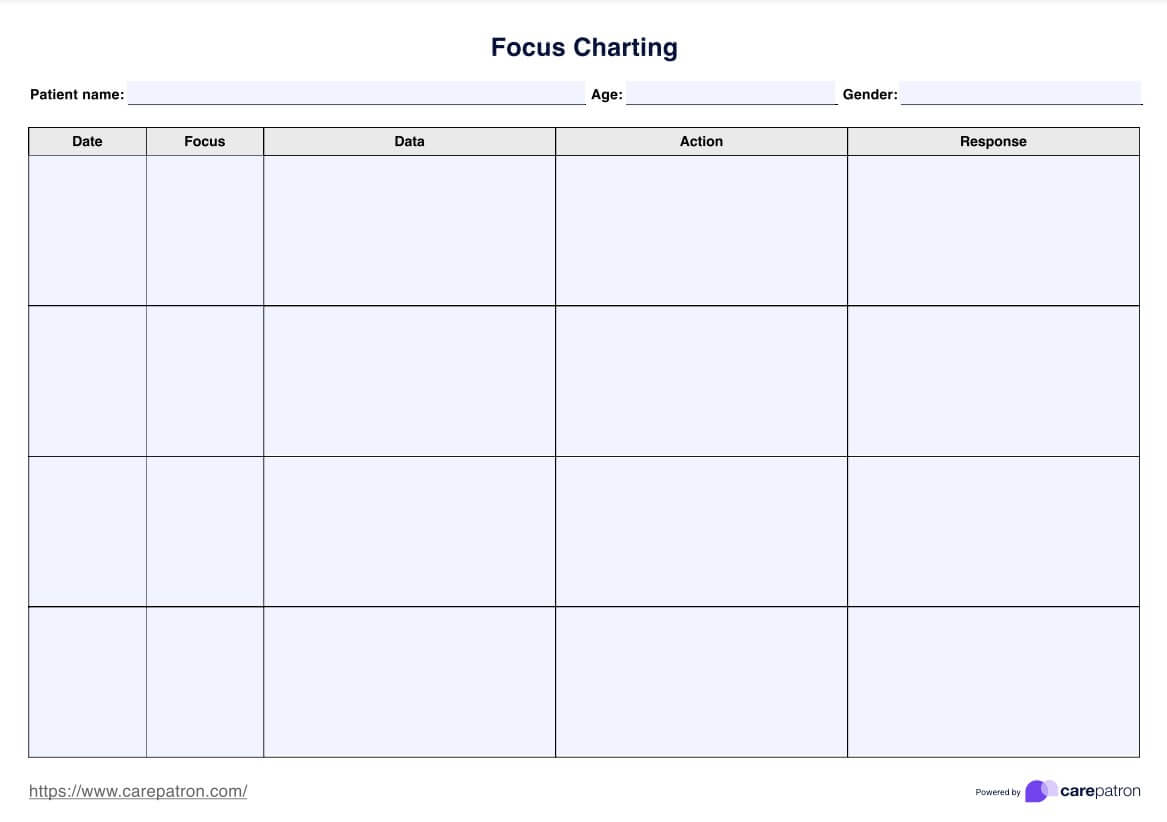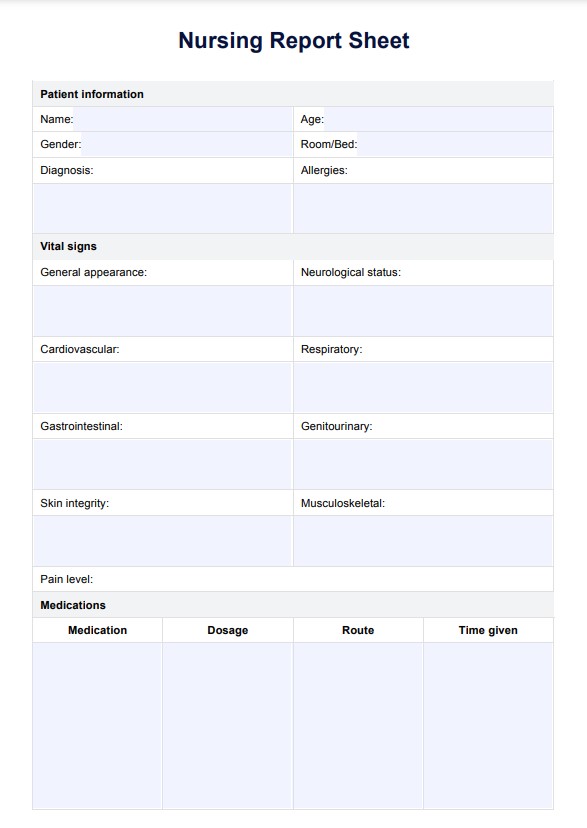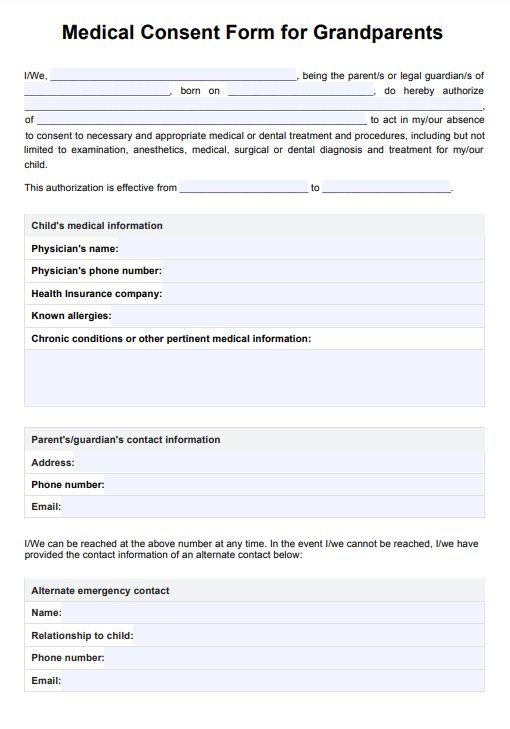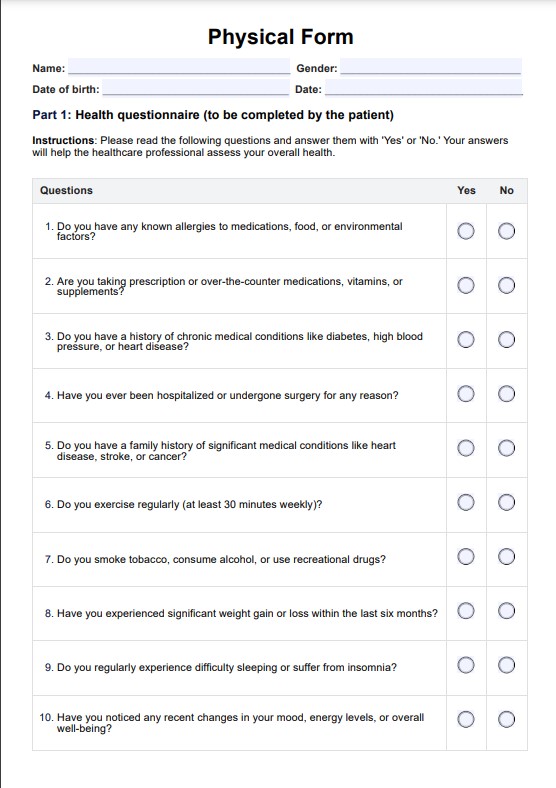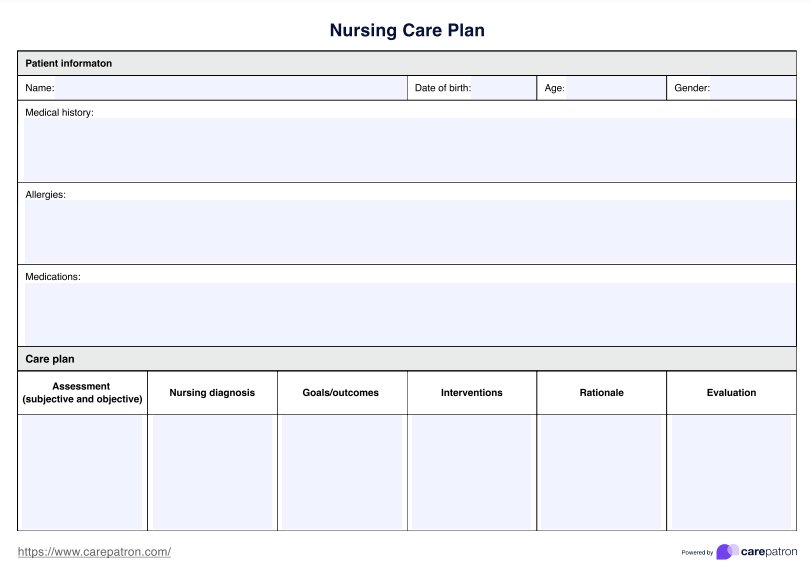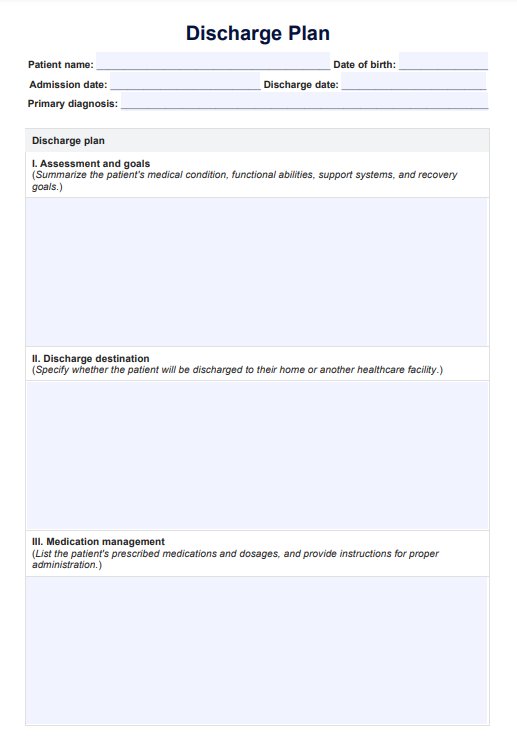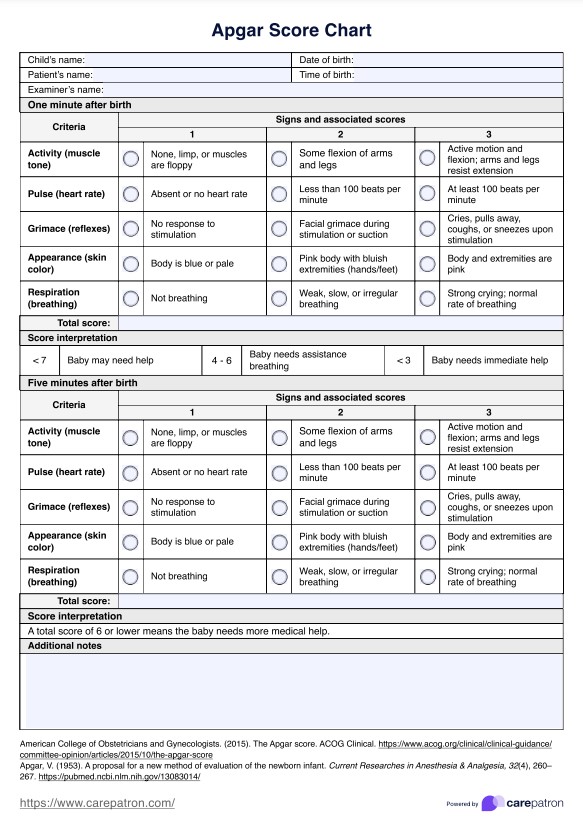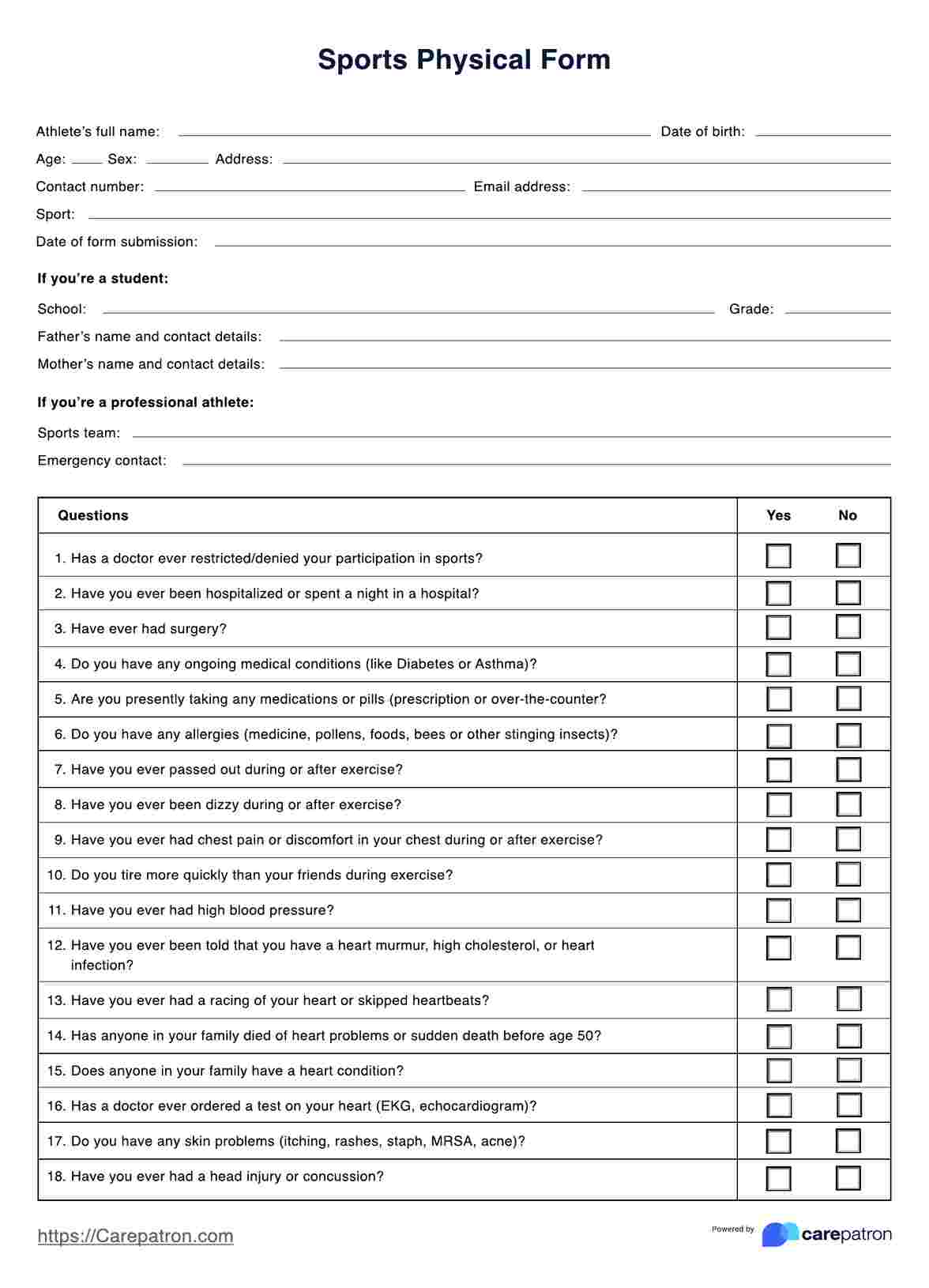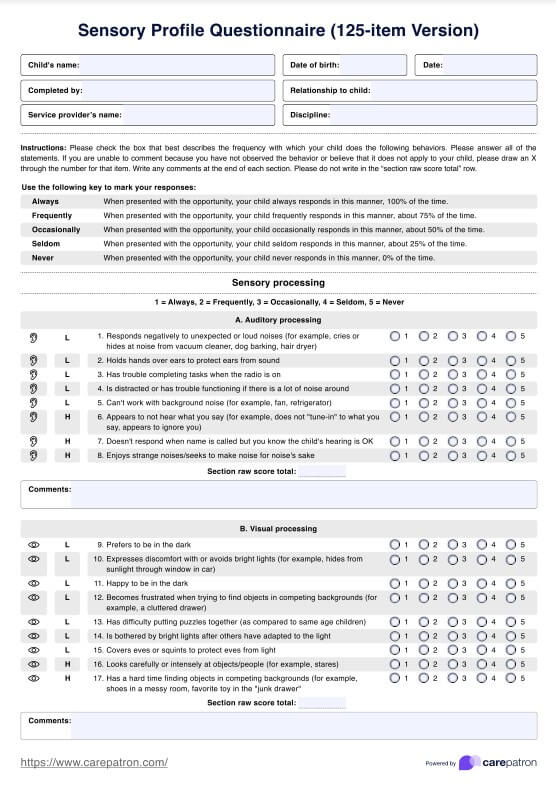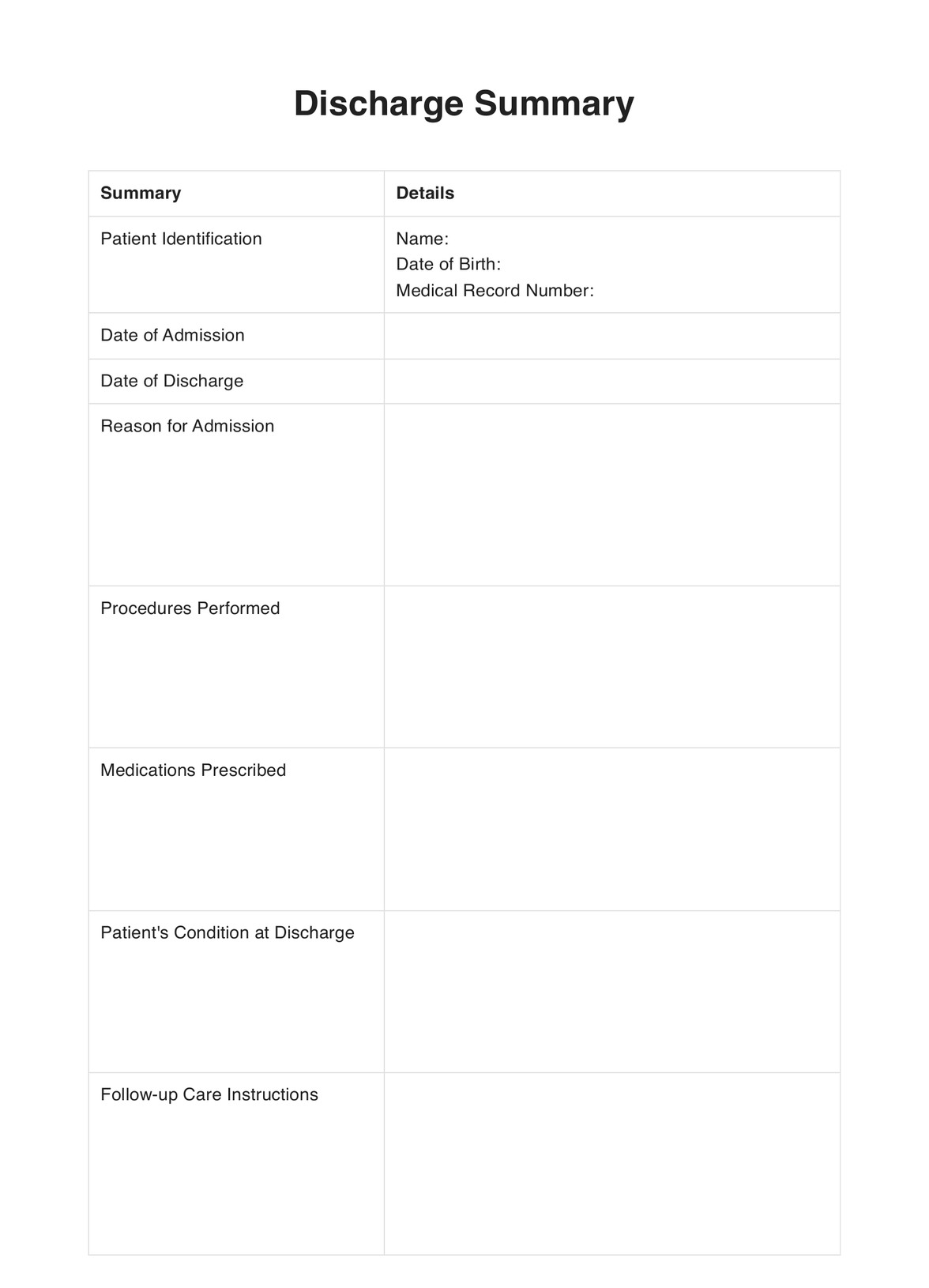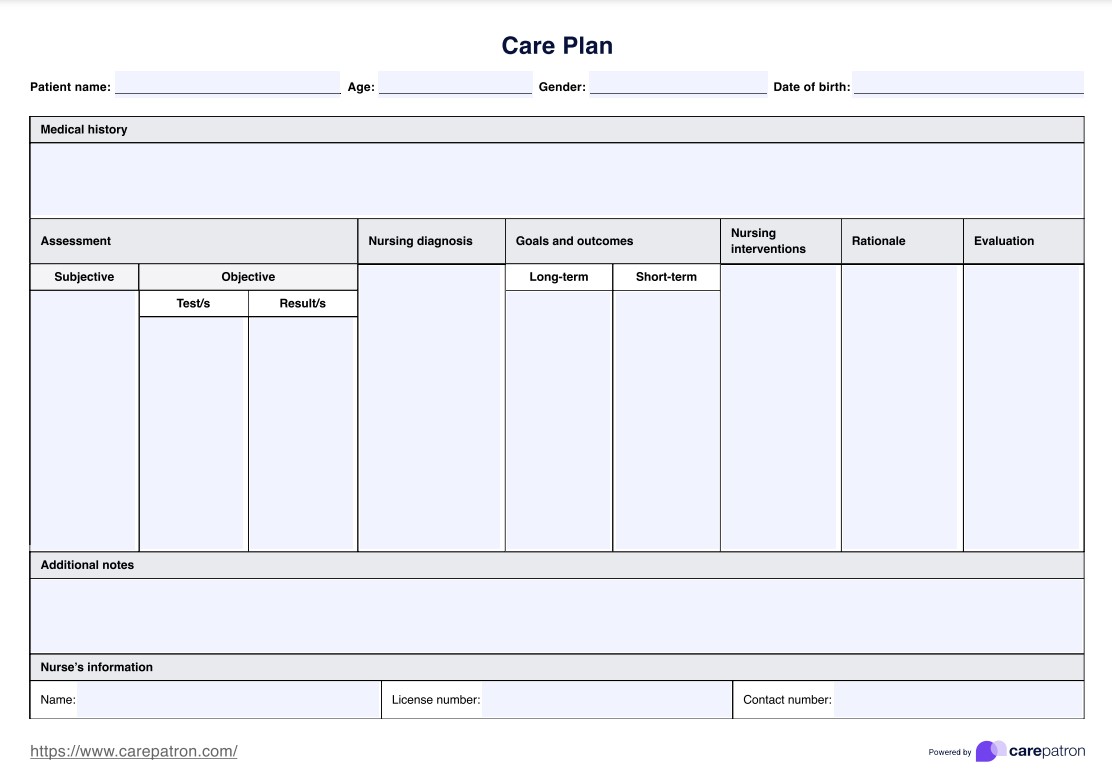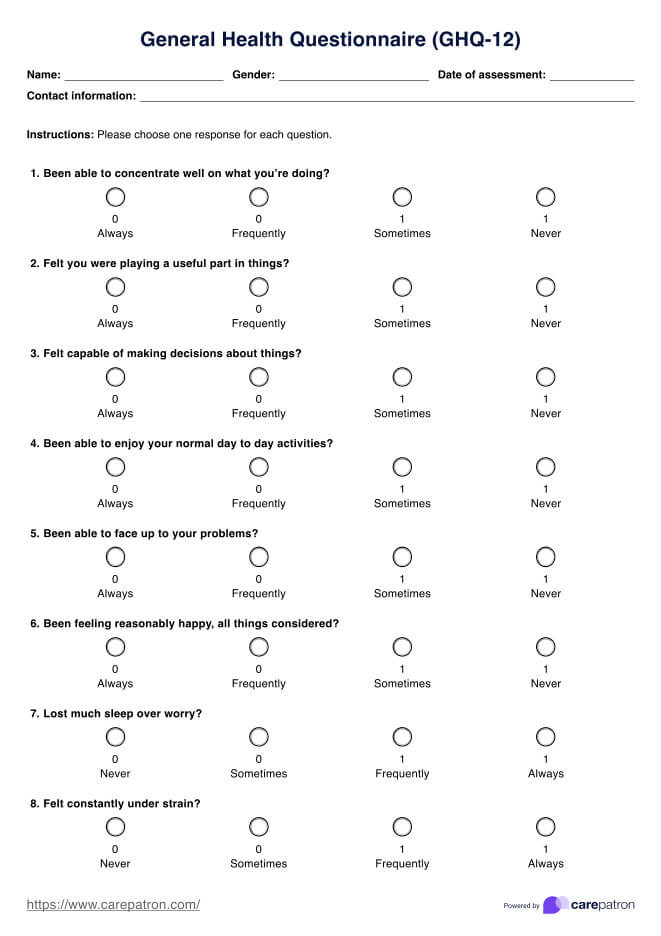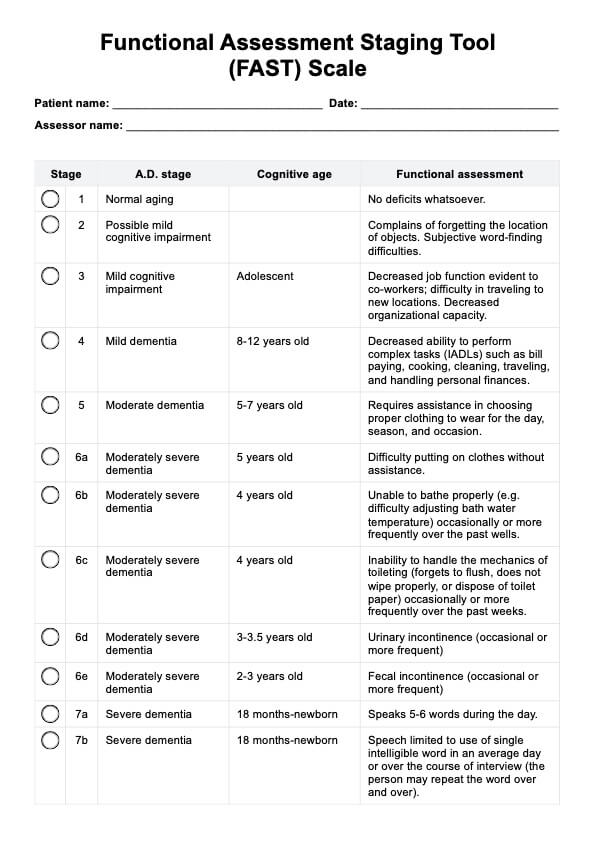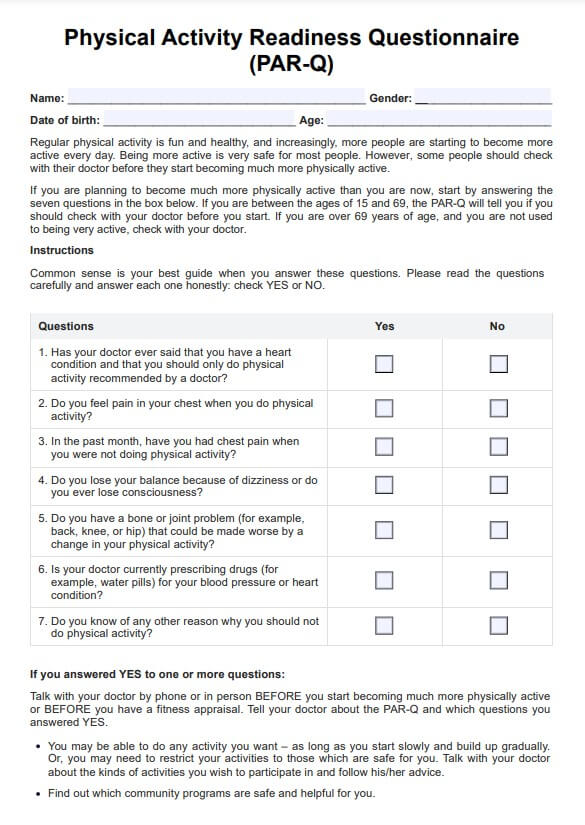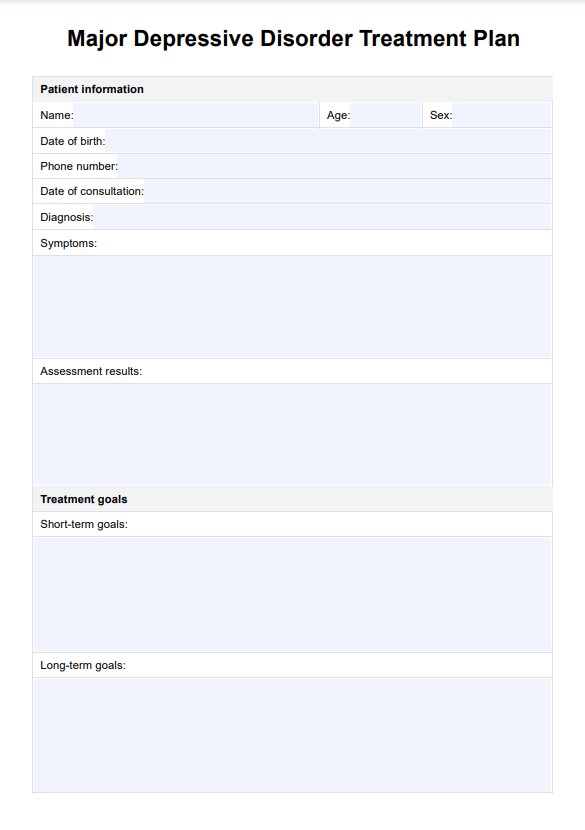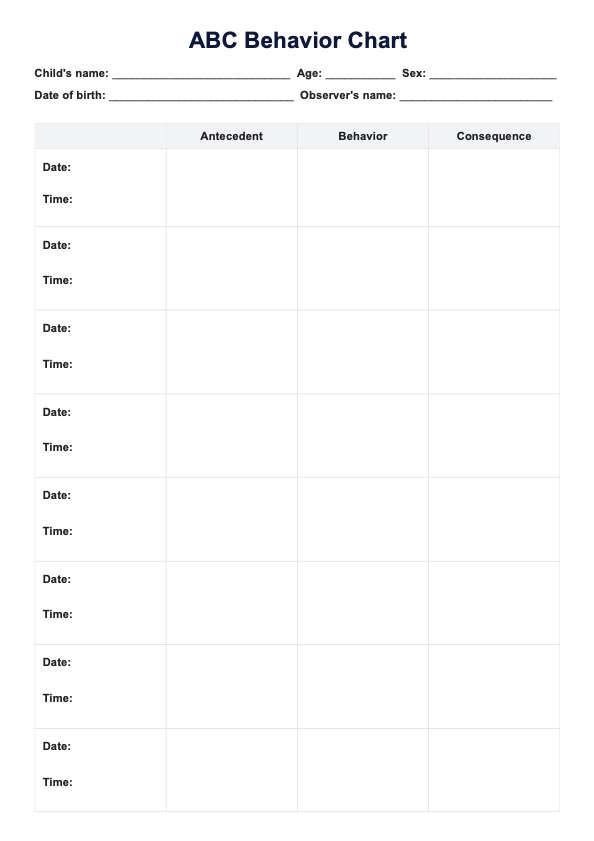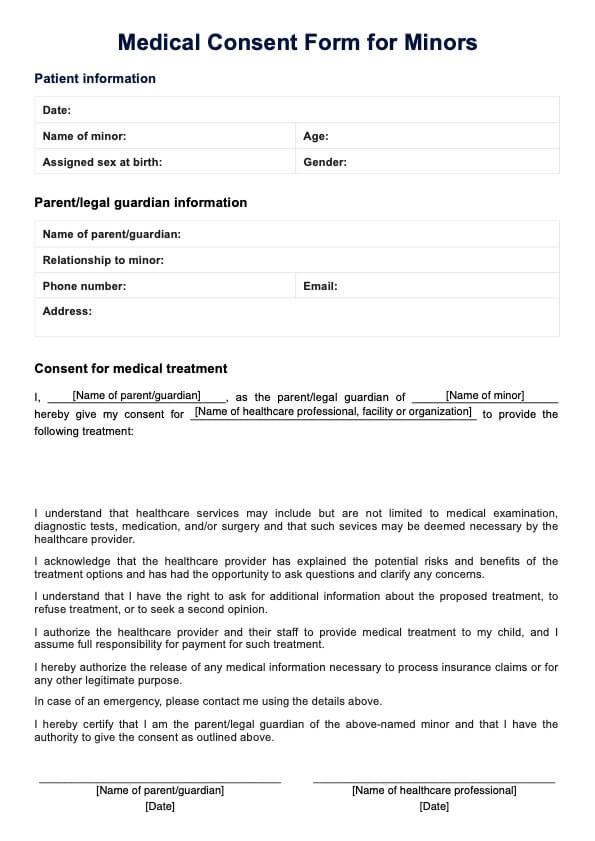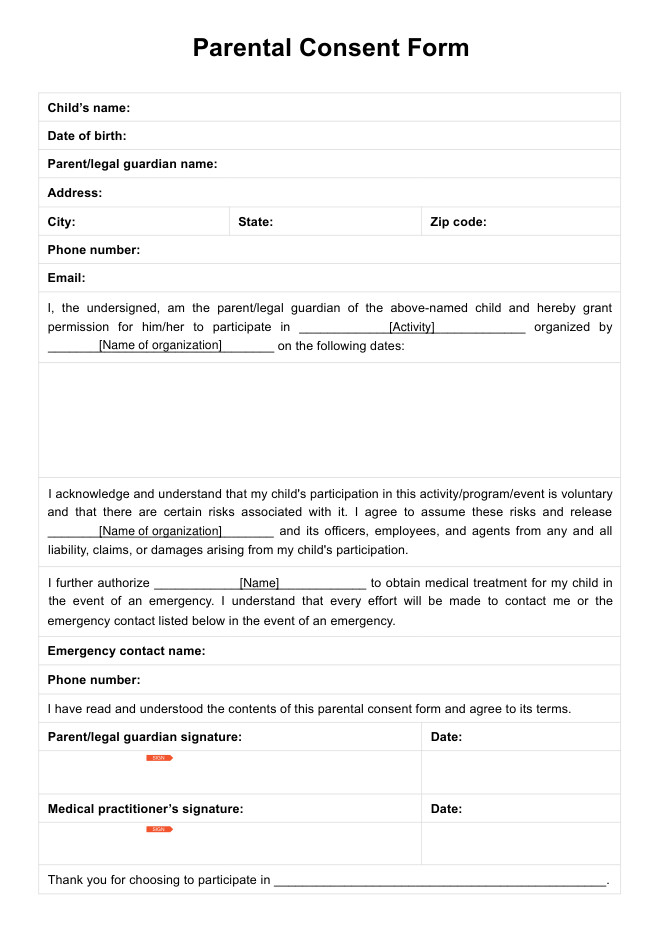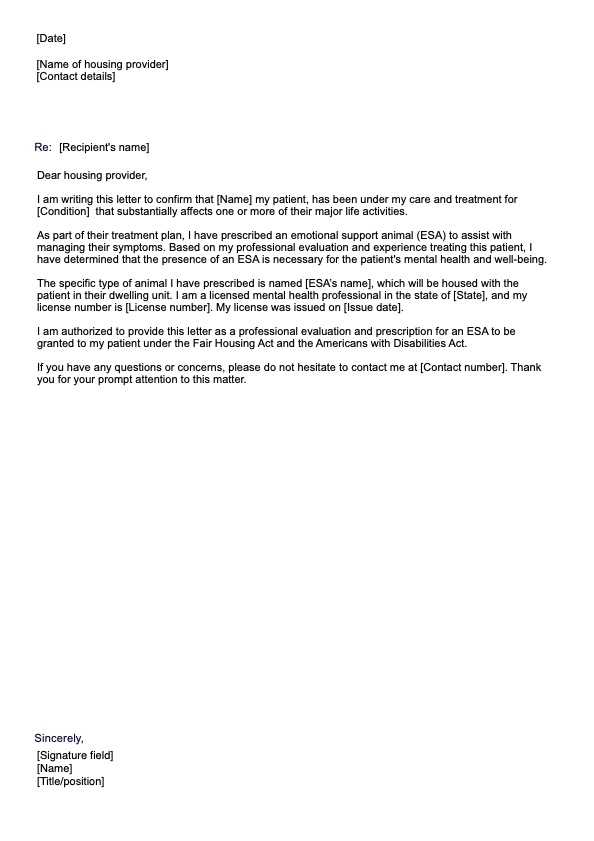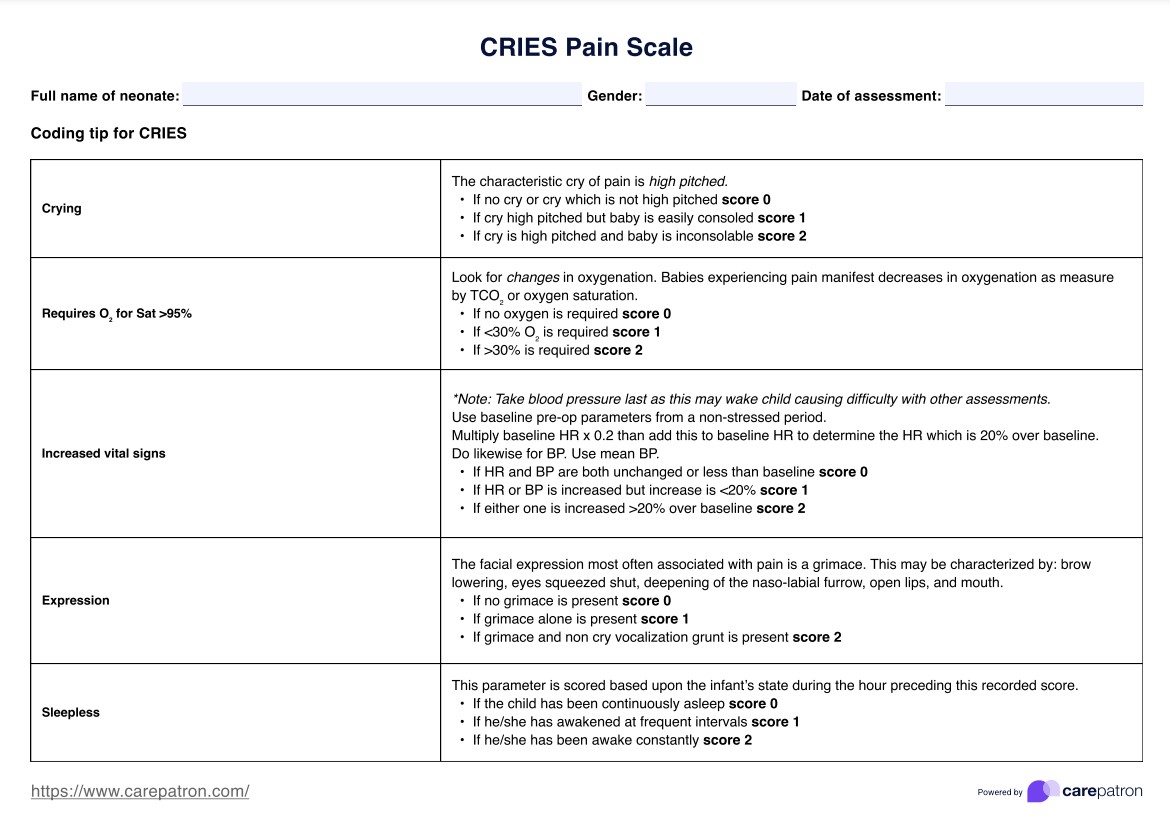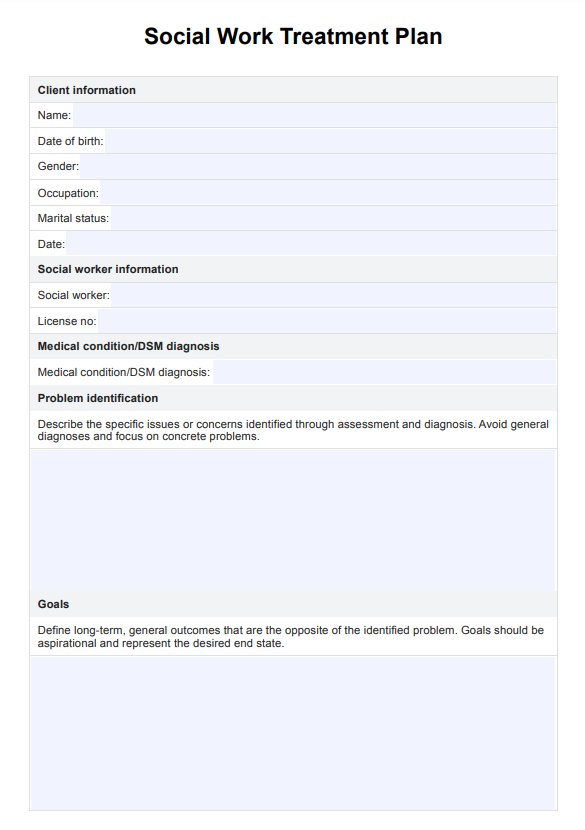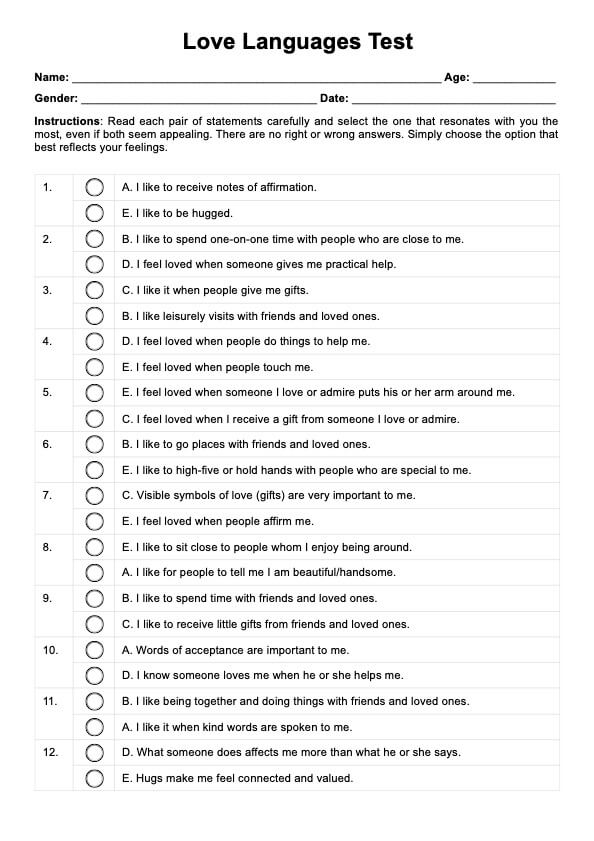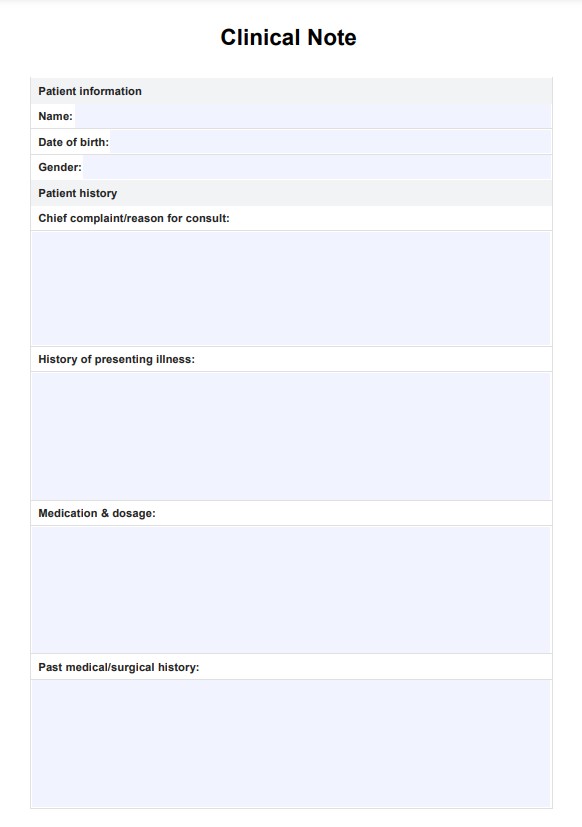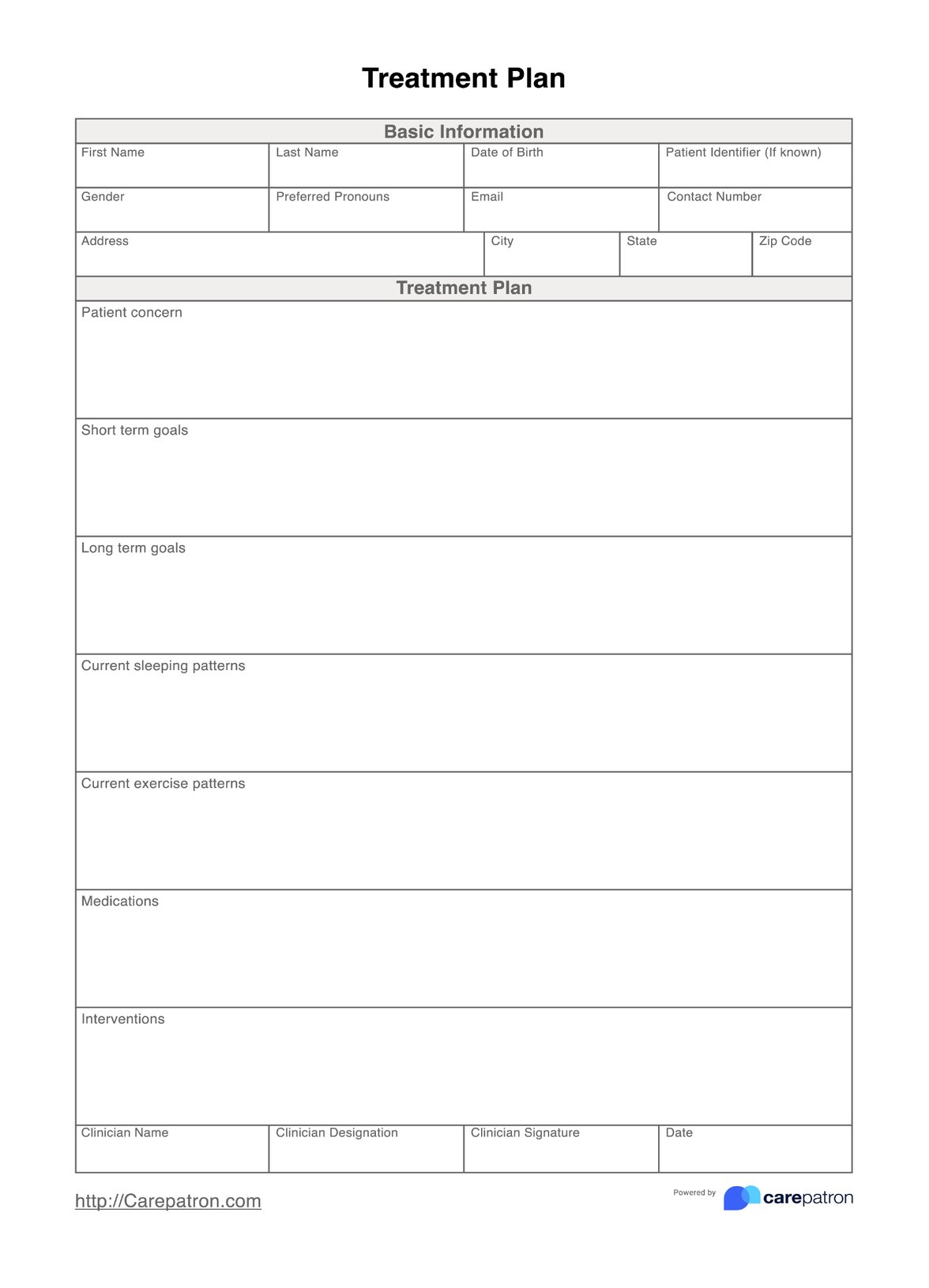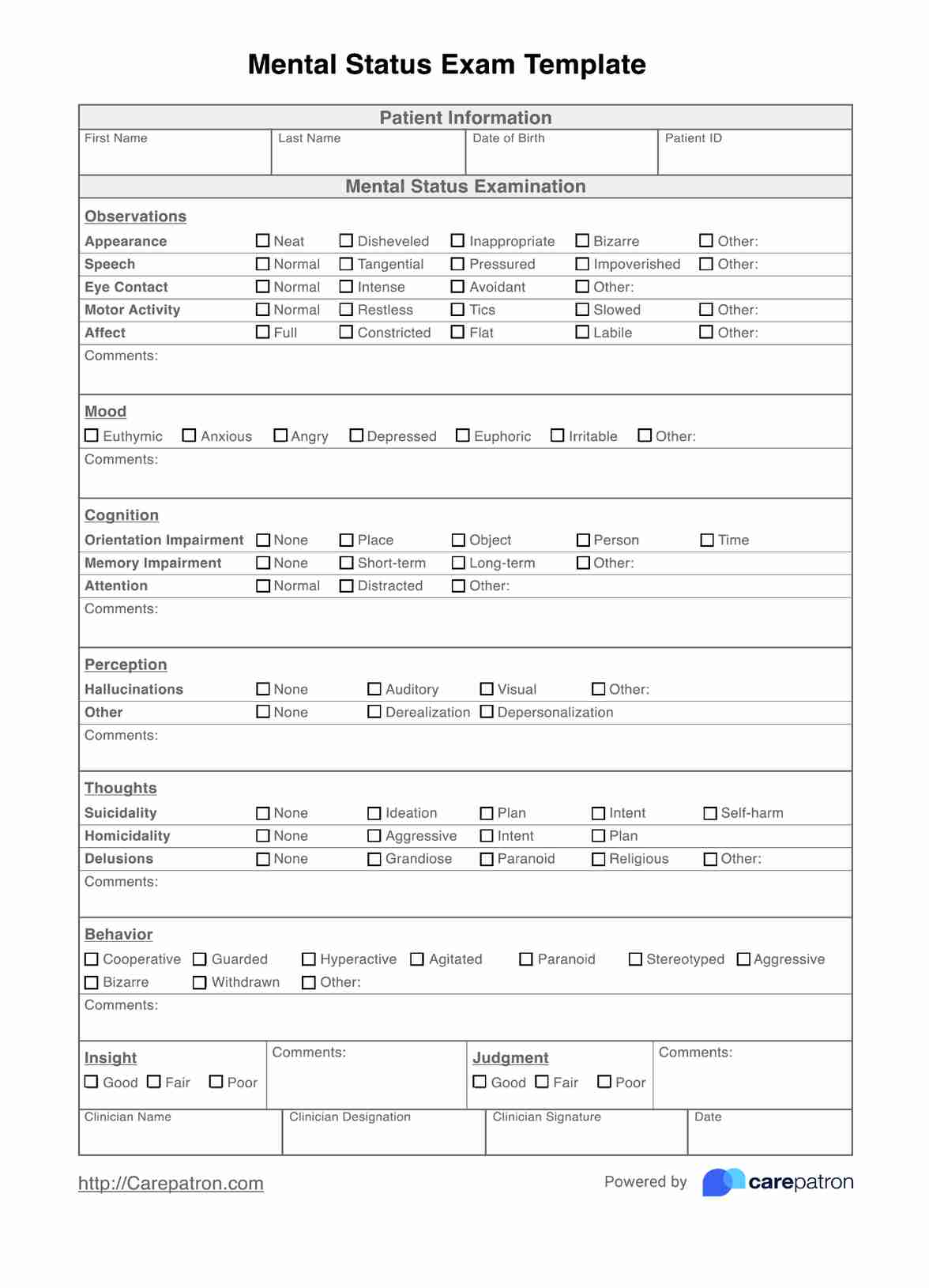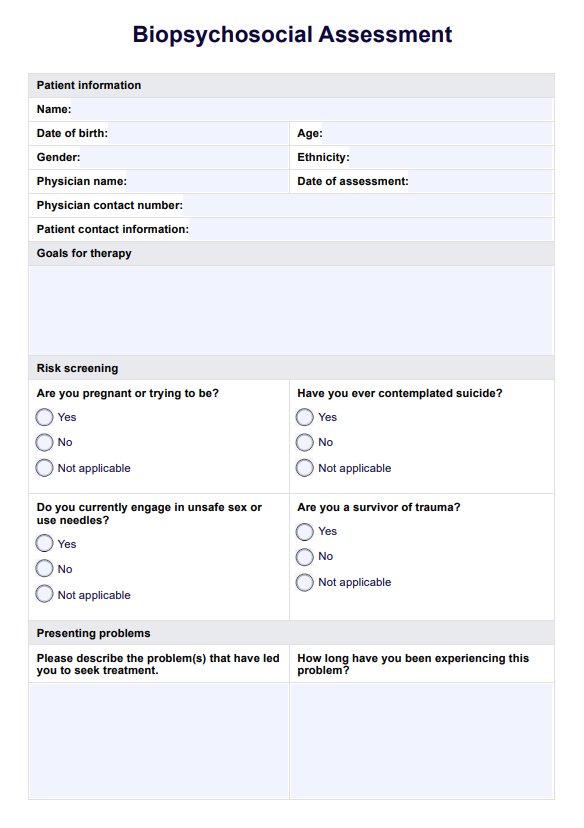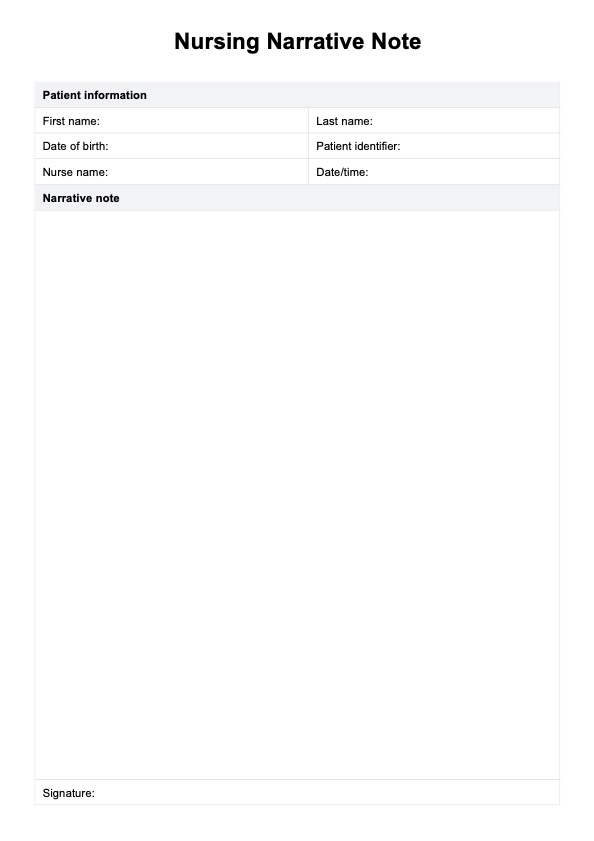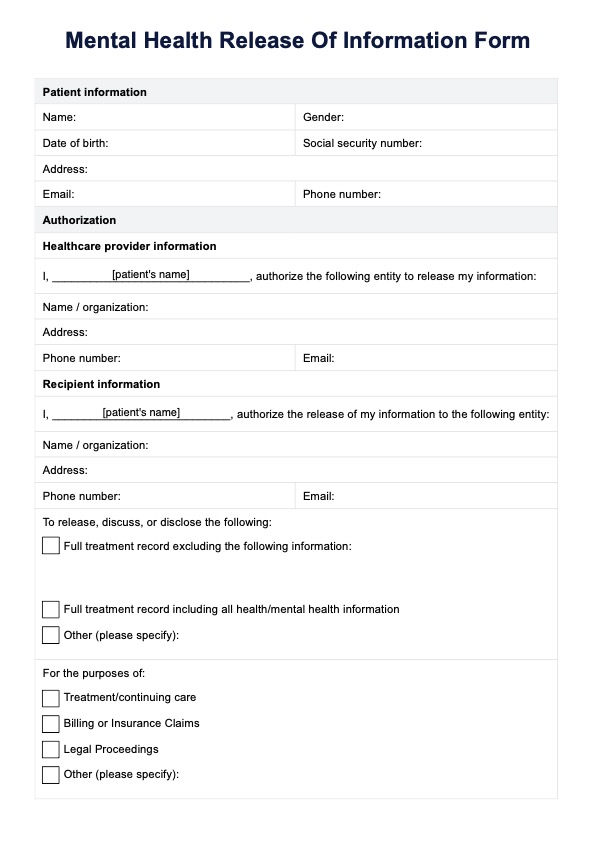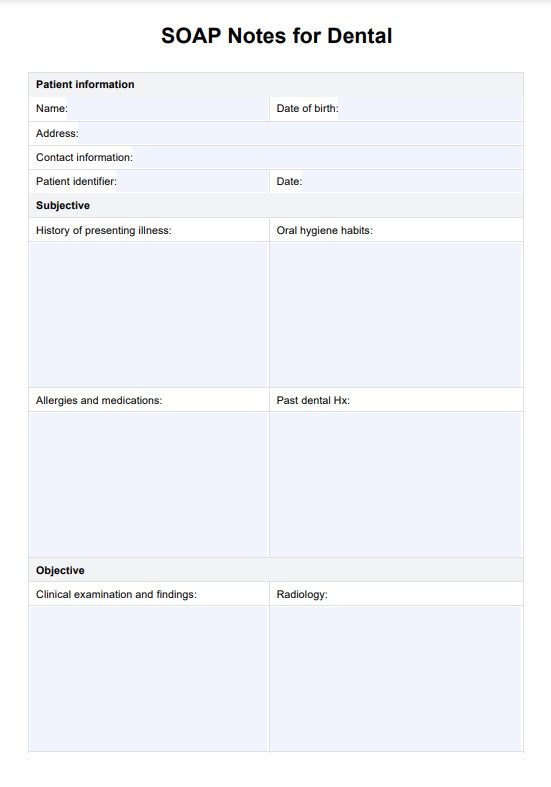Reasons for Living Inventory
Discover how to use the Reasons for Living Inventory in your sessions to understand better and support your clients’ motivations, resilience, and mental health.


What are the Reasons for Living Inventory?
The Reasons for Living Inventory (RFL) is a 48-item self-report measure designed to evaluate a range of brief reasons individuals often give themselves for staying alive and not ending their lives. Designed by Linehan et al. (1983), this inventory encompasses six subscales:
- Survival and coping beliefs: This assessment assesses the client’s beliefs about their ability to cope with stress and adversity and their general outlook on survival.
- Responsibility to the family: This measure measures the client's sense of obligation or connection toward their family members.
- Child-related concerns: Clients often express concerns about the impact of their actions on their children’s lives, which can often serve as a powerful motivator for them to continue living.
- Fear of suicide: Assesses the client’s fear or aversion to the act of suicide itself, including the potential physical, emotional, and social consequences.
- Fear of social disapproval: Gauges the client's concern about how others, particularly their social circle or community, might view or react to their actions.
- Moral objections: Measures the client’s internal moral or ethical beliefs that prevent them from considering suicide; these are often rooted in religious or philosophical values, and they may identify suicide as morally wrong.
Individuals who undertake this inventory use a Likert scale from 1 (not at all important) to 6 (extremely important) to indicate how important each reason is to them.
It has often been subject to confirmatory factor analysis and has successfully displayed a robust factor structure, revealing the distinct dimensions of reasons for living (Pirani et al., 2020). These factor analyses examine how different psychological traits, such as coping skills and social support, clustered together and influenced overall mental well-being.
Practitioners within clinical psychology and clinical child psychology can use this inventory to gain a comprehensive understanding of the client's suicidal ideation or to assess the suicide risk factors surrounding previous suicide attempts. However, this resource can also be used to understand the client’s support systems better and provide an initial assessment of their current emotional state and other risk factors, such as suicide-related behaviors.
Reasons for Living Inventory Template
Reasons for Living Inventory Example
How to use our Reasons for Living Inventory template
Here's how to use our free Reasons for Living Inventory template:
Step 1: Access the template
First, access this template by clicking "Use template," allowing you to customize the resource via the Carepatron app. For a PDF copy you can print, choose "Download."
Step 2: Work with your client
Discuss what this template is for. Supporting clients in understanding how this document works and what they are required to do can allow them to answer statements more truthfully. Before beginning the inventory, be sure to ask your client if they have any questions.
Step 3: Score the Reasons for Living Inventory
Once completed, go ahead and score the Reasons for Living Inventory. You can utilize the scoring section at the end of the inventory to support you.
Step 4: Discuss with your client
Once scoring is complete, discuss the findings with your client. Answer any questions and work together to create a support plan or the next steps. It may be helpful to review the results and discuss the answers in the next session.
Step 5: Securely store this document
Finally, you can store this document securely within the Carepatron app. Having this document on hand and within the patient's file allows you to re-visit answers and check the client's progress later.
Scoring
Review the total score to interpret the assessment results, which provide an overall snapshot of the client's psychological resilience and reasons for living. Each response on the Likert scale corresponds to a specific point value for scoring. For example, 1 = 1, 2 = 2, 3 = 3, 4 = 4, 5 = 5, 6 = 6.
Overall scores are as follows:
- High score (240-288): This may suggest the client has strong motivation and protective factors.
- Moderate score (150-239): May indicate some challenges, such as disconnection from future goals or relationships. Further exploration may be required in these areas for growth.
- Low score (48-149): May suggest significant distress, hopelessness, or isolation. This may indicate a need for focused interventions to build hope, social support, or purpose.
Pay attention to individual category scores. Low scores may highlight vulnerabilities that need attention and help identify specific areas of concern, such as family relationships, social support, future goals, or personal meaning.
Based on the results, a tailored action plan is needed to strengthen protective factors, build connections, and foster hope while closely monitoring the client’s progress and adjusting interventions.
Next steps
After administering the inventory and assessing your patient's results, you proceed to the following steps:
Review action plan
You may alter the current treatment plans to address specific concerns better. For example, if it is evident that your client is struggling with interpersonal relationships, implementing other mental health services, such as a relationship counselor, may better support your patient. Practitioners may also explore the protective factors in the client's life to support further growth.
Encourage patient self-reflection
Working with your client to continue their mental health journey, you may implement mental health strategies focused on self-reflection. Carepatron offers self-reflection worksheets supporting future treatment options, such as self-reflection questions and the self-reflection journal.
Evaluate external support systems
Another way to support individuals struggling with their reasons to live is to evaluate their support system. Does their support system work to provide them with a safe environment? If not, it may be worth trying to navigate healthier choices for their client or resorting to external resources for support.
Foster a hopeful outlook
Through important therapeutic skills such as reframing negative thoughts and encouraging small wins, you can foster a hopeful outlook for your client. This can build the client’s confidence and reinforce their reasons for living.
References
Linehan, M. M., Goodstein, J. L., Nielsen, S. L., & Chiles, J. A. (1983). Reasons for staying alive when you are thinking of killing yourself: the reasons for living inventory. Journal of Consulting and Clinical Psychology, 51(2), 276–286. https://doi.org/10.1037//0022-006x.51.2.276
Pirani, S., Kulhanek, C., Wainwright, K., & Osman, A. (2020). The Reasons for Living Inventory for Young Adults (RFL-YA-II). Assessment, 28(3), 107319111990024. https://doi.org/10.1177/1073191119900242
Usein kysytyt kysymykset
The Reasons for Living template can support individuals in different contexts, such as typical therapy sessions or more intense mental health support systems.
The time taken to complete these suicidal behaviors questionnaire varies. Clients can complete this inventory in around 15 to 30 minutes. Allow extra time for individuals with specific needs.
No, this inventory cannot be used to diagnose mental health disorders. However, the information it gathers can be used to understand the individual and support further analysis.


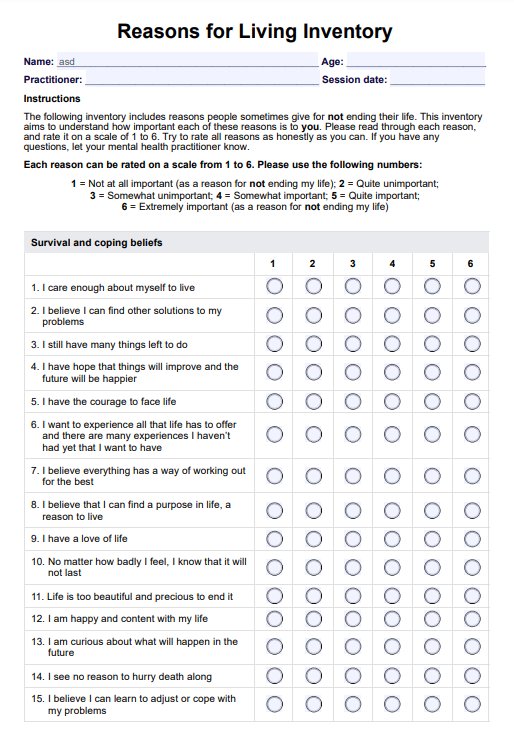
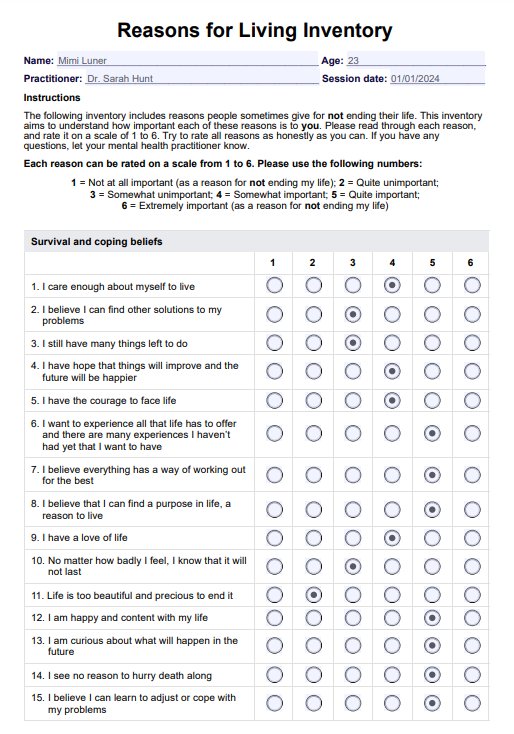

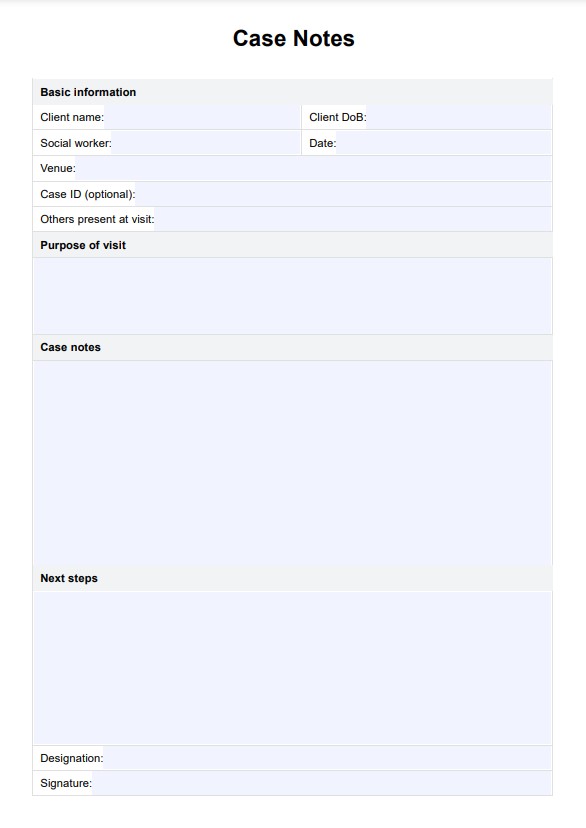
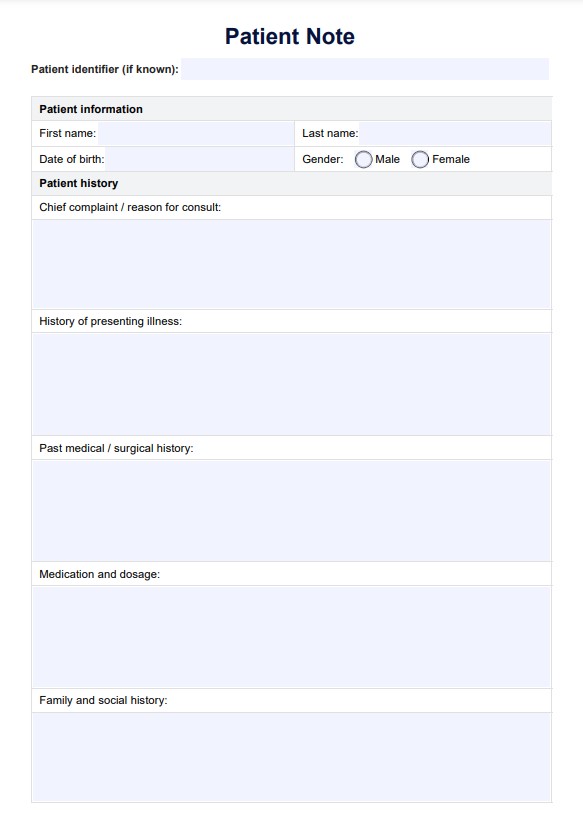
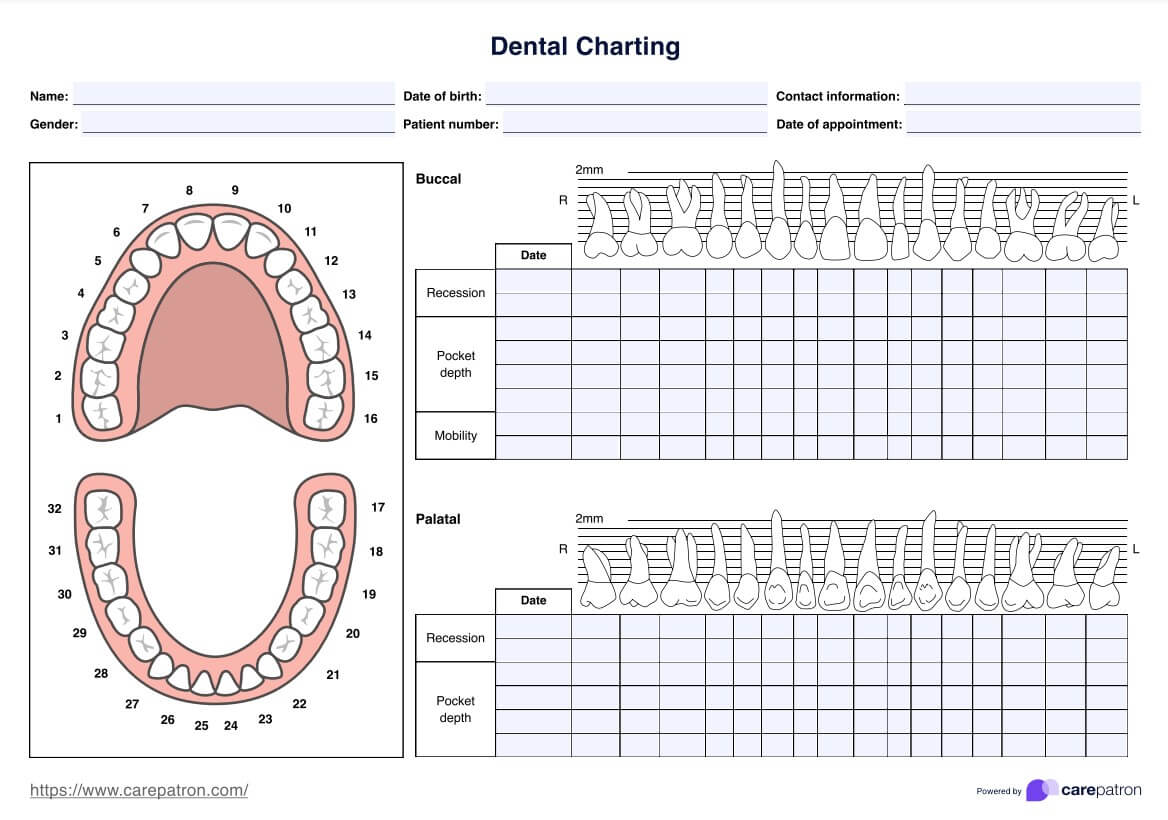
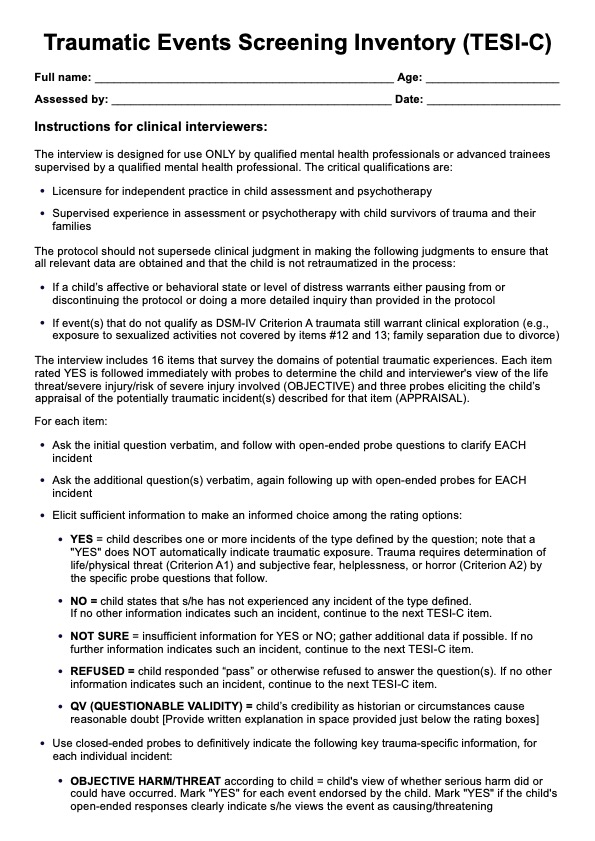
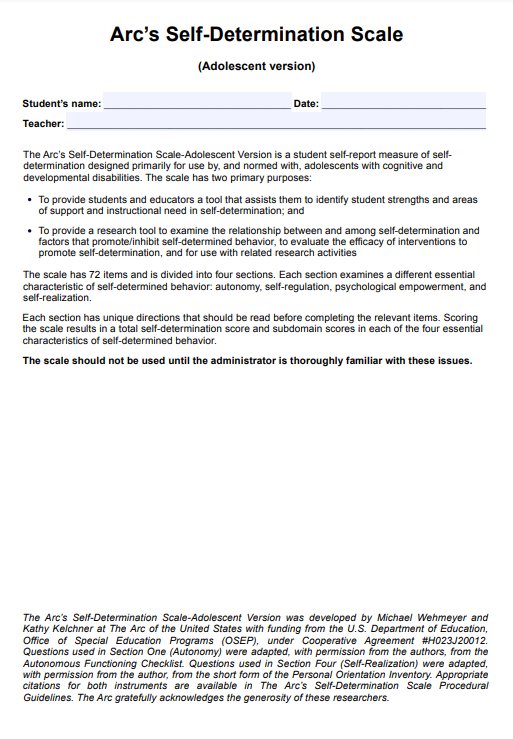
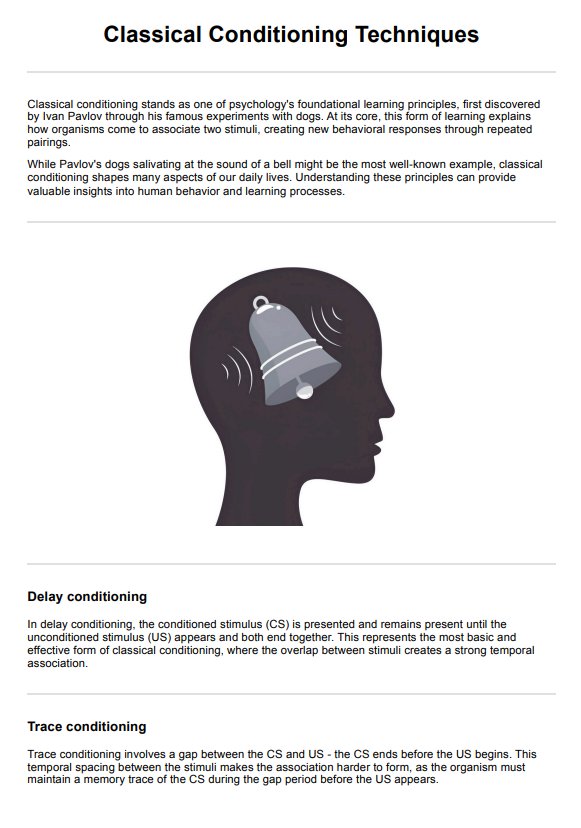
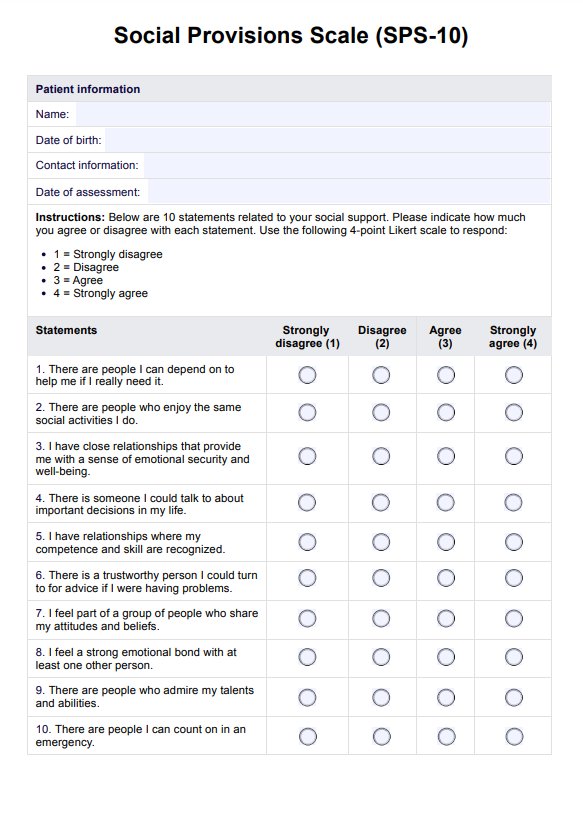

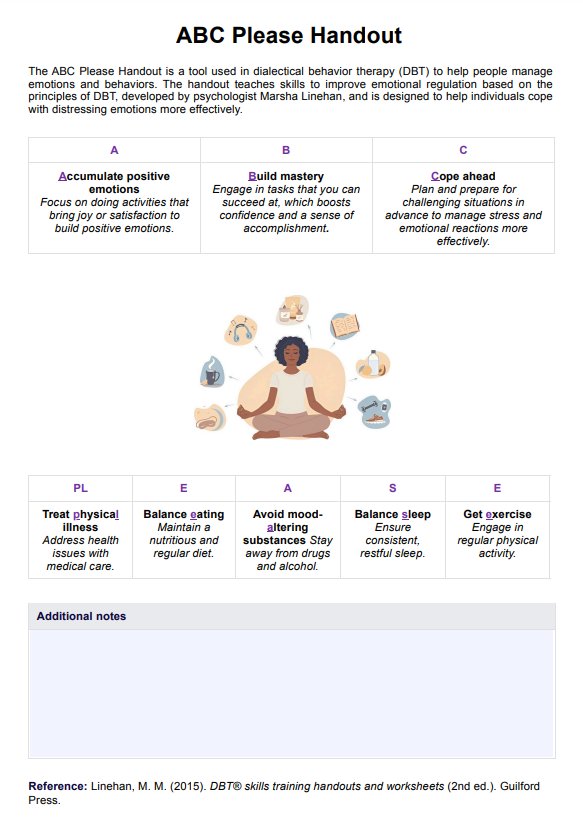
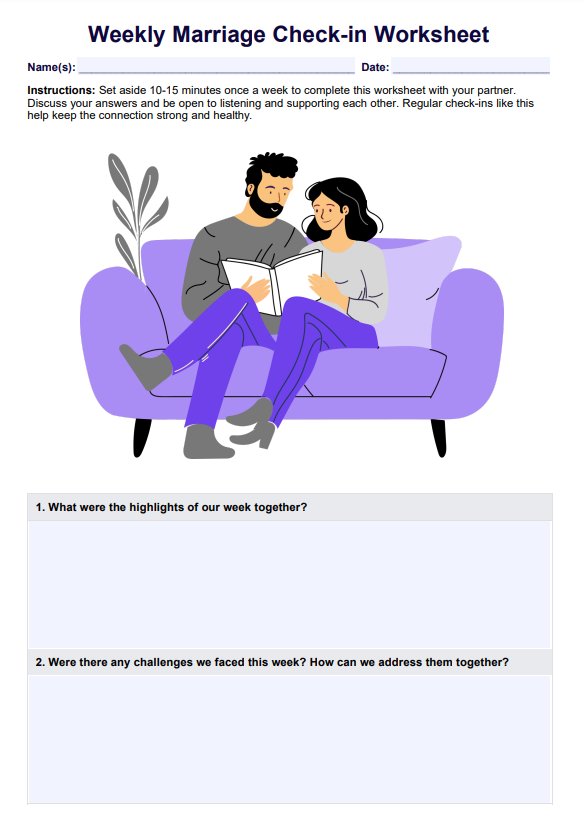
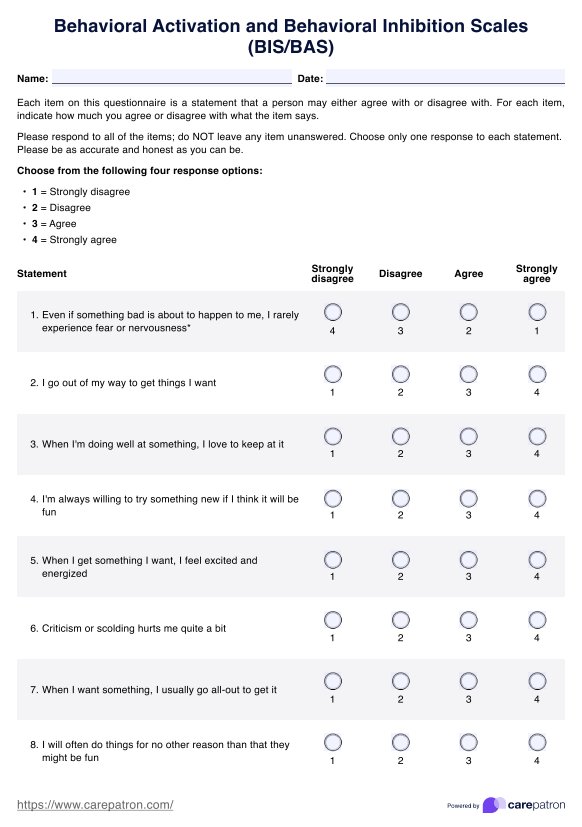
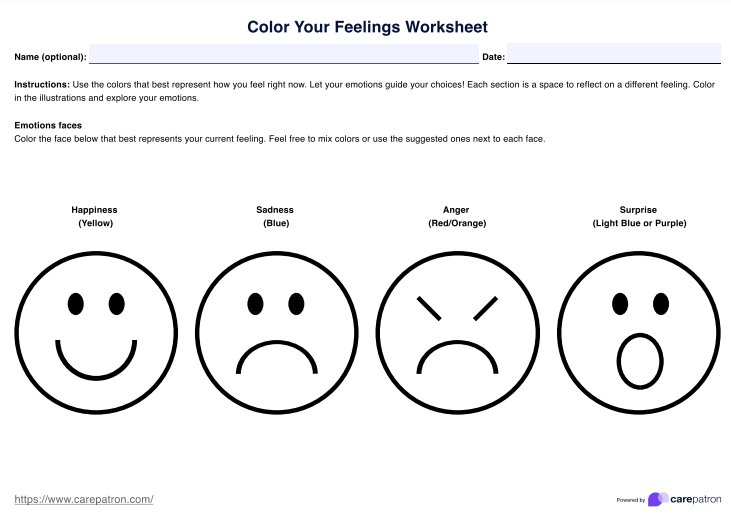
-template.jpg)
